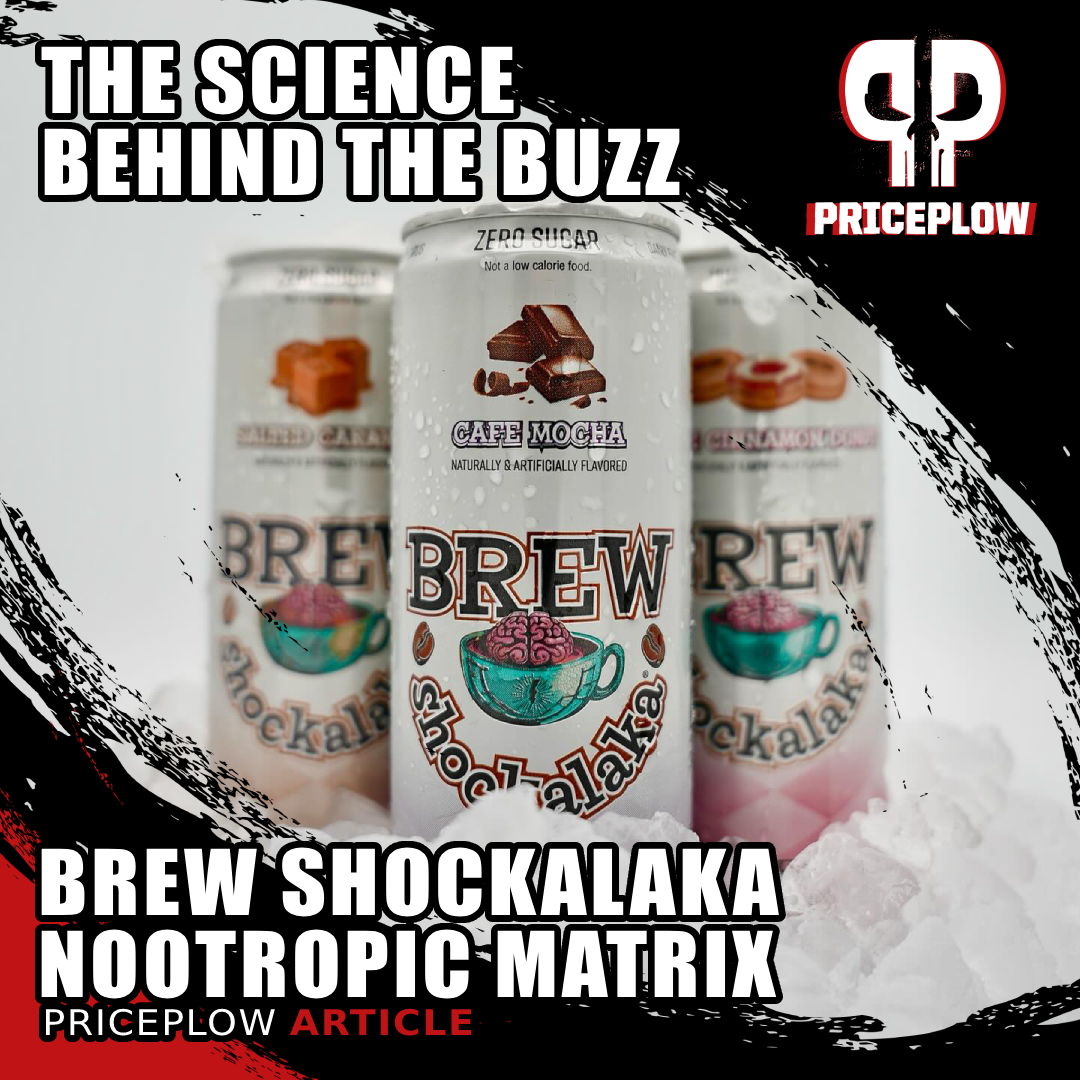
Brew Shockalaka's formula explained: 500mg NALT for neurotransmitter support, 100mg CognatiQ (143% BDNF increase), 200mg caffeine with 100mg L-theanine (2:1 ratio), plus theobromine and MCTs. Every ingredient clinically dosed. Zero sugar, zero dairy.
When Max Fairchild partnered with industry legend Chuck Letchman to create Brew Shockalaka, they didn't just make another RTD coffee alternative -- they engineered a complete cognitive enhancement system from the ground up. The result? A zero-sugar, dairy-free functional beverage that delivers 1000mg of clinically-studied nootropics alongside smooth, sustained energy that conventional coffee simply can't match.
The Ingredient Selection That Make Brew Shockalaka Work So Well
We've already covered what makes Brew Shockalaka special from a product perspective. Now it's time to dig into the why behind every ingredient choice, the manufacturing innovations that make it possible, and the science that separates this from the sugar-loaded conventional coffees cluttering cooler shelves everywhere.
This isn't about window dressing a label with trendy ingredients. Every component in the Elevating Matrix serves a specific purpose, dosed at levels that actually work. From the acetylated form of tyrosine that supports catecholamine production under stress, to the coffee fruit extract that can increase brain-derived neurotrophic factor (BDNF) by 143%, to the strategic 2:1 caffeine-to-theanine ratio that smooths out the jitters... there's genuine formulation expertise at work here.
It's all covered below, but first, check out PricePlow's prices and availability, and then let's get into the science:
Brew Shockalaka Coffee RTD – Deals and Price Drop Alerts
Get Price Alerts
No spam, no scams.
Disclosure: PricePlow relies on pricing from stores with which we have a business relationship. We work hard to keep pricing current, but you may find a better offer.
Posts are sponsored in part by the retailers and/or brands listed on this page.
This area is reserved for Team PricePlow's upcoming Ingredients video.
Subscribe to our channel and sign up for notifications so you catch it when it goes live!
Manufacturing Innovation: Why Retort Matters
Before we explore individual ingredients, it's worth understanding the manufacturing process that makes Brew Shockalaka possible. As Max and Chuck discussed on Episode #182 of the PricePlow Podcast, this beverage undergoes retort processing -- pressurized heat treatment at 256 degrees for 14 minutes.
This isn't the cold-fill pasteurization you'll find in carbonated energy drinks. Retort processing delivers two major advantages:
- 24-month shelf life without harsh preservatives like benzoates or sorbates
- Superior product stability that maintains taste and efficacy over time
The challenge? Not every ingredient survives retort processing unchanged. The team received the equivalent of over $100,000 in R&D developing formulations that could withstand the heat treatment while maintaining both flavor and functionality. That investment shows in the final product -- even after 16 months, Brew Shockalaka tastes as good as day one.
Brew Shockalaka Elevating Matrix Ingredients
Each 11 oz can delivers a carefully constructed nootropic stack designed for real-world cognitive performance:
-
N-Acetyl-L-Tyrosine -- 500mg
N-Acetyl-L-Tyrosine serves as the cognitive foundation of Brew Shockalaka's nootropic matrix. This acetylated form of the amino acid L-tyrosine functions as the biochemical precursor to dopamine and norepinephrine, two catecholamine neurotransmitters that govern focus, motivation, and mental clarity.[1] When demanding cognitive tasks or stressors deplete these critical neurotransmitters, NALT provides the raw materials your brain needs to maintain catecholamine synthesis and sustain peak performance.
The Catecholamine Synthesis Pathway
Once NALT crosses the blood-brain barrier and reaches neurons, it converts into L-tyrosine through deacetylation. From there, the synthesis pathway begins: tyrosine hydroxylase (TH) converts L-tyrosine into L-DOPA, which then transforms into dopamine. In specific neurons containing dopamine beta-hydroxylase, dopamine further converts to norepinephrine.[2]
What makes this pathway fascinating is its built-in regulation. Tyrosine hydroxylase operates under end-product inhibition, meaning the catecholamines themselves suppress the enzyme's activity.[3] This self-limiting mechanism prevents excessive neurotransmitter production under normal circumstances, which is why tyrosine supplementation enhances catecholamine synthesis only in actively firing neurons.[1]
This selective action is crucial: NALT doesn't flood your brain with catecholamines indiscriminately. Instead, it supports synthesis where neural activity demands it most, essentially working as a "depletion reverser" rather than a blanket stimulant.[4]
Performance Under Pressure
The real magic of tyrosine emerges under stress or high cognitive demand. Research consistently demonstrates that tyrosine's benefits become most apparent when you're pushed to your limits. Studies show tyrosine supplementation improves working memory, cognitive flexibility, and executive function, but these advantages shine brightest under challenging conditions.[4]
Environmental stressors amplify tyrosine's effects. Military research using 150mg/kg doses found tyrosine improved performance on multiple cognitive tasks during exposure to cold temperatures and simulated altitude.[5] Other studies demonstrated improved memory during cold exposure and enhanced endurance capacity in heat.[6] Even without overt environmental stress, tyrosine enhances working memory when cognitive demands are high enough to create a stress-like state of neurotransmitter depletion.[4]
Brew Shockalaka RTD coffee delivers zero sugar cognitive enhancement with 200mg natural caffeine + 1000mg nootropics. Three dessert-inspired flavors at just 45 calories.
The mechanism driving these benefits involves preventing catecholamine depletion. When neural activity increases during demanding tasks, catecholamine synthesis and release accelerate. Without adequate precursor availability, synthesis can't keep pace with demand, leading to declining neurotransmitter levels and degraded performance. Tyrosine supplementation helps maintain the catecholamine supply, preventing this performance decline.[4]
Pharmacokinetics and Dosing
After oral administration, plasma tyrosine levels peak between 1-2 hours and can remain significantly elevated for up to 8 hours.[7] In animal studies, prefrontal dopamine increases approximately 1 hour after tyrosine administration, aligning with the rise in plasma levels.[4]
Brew Shockalaka's 500mg dose sits at the beginning of the effective range established by research. Most human studies showing cognitive benefits use 100-150 mg/kg body weight, which translates to larger 7-10.5g doses for a 70kg individual. However, studies have demonstrated benefits at lower absolute doses, and the World Health Organization's daily requirement is just 14 mg/kg (about 1g for a 70kg person).[4] The 500mg dose provides a meaningful boost without approaching saturation levels that wouldn't yield additional benefits.
Why the Acetylated Form?
The acetylation of L-tyrosine serves several purposes. The acetyl group may enhance stability and solubility, potentially improving the ingredient's compatibility with the beverage matrix and its ability to survive retort processing. While research on NALT specifically is more limited compared to standard L-tyrosine, the acetyl group is cleaved in the body to yield free L-tyrosine, which then follows the standard catecholamine synthesis pathway.
Some evidence suggests acetylated amino acids may have different absorption kinetics, though whether this translates to superior bioavailability compared to standard L-tyrosine remains debated in the literature. What's clear is that supplemental tyrosine, in either form, can elevate plasma and brain tyrosine concentrations enough to support enhanced catecholamine synthesis under demanding conditions.[1]
Synergy with Caffeine and the Broader Formula
NALT's inclusion alongside 200mg of caffeine creates a potent cognitive combination. While caffeine primarily works through adenosine receptor antagonism to promote alertness, it also influences catecholamine release.[8] By ensuring adequate catecholamine precursor availability through NALT supplementation, Brew Shockalaka supports the neurotransmitter systems that caffeine activates.
This complementary approach addresses a key limitation: stimulants can increase catecholamine turnover, potentially depleting stores over time. NALT helps maintain the substrate pool, supporting sustained cognitive performance throughout caffeine's active window. Combined with L-theanine's ability to smooth caffeine's rough edges, NALT contributes to a balanced stimulant experience that delivers focus without depletion or crash.
At 500mg per can, Brew Shockalaka delivers a clinically meaningful dose positioned to support cognitive performance when you need it most, whether you're facing a demanding work deadline, pushing through mental fatigue, or maintaining focus during extended periods of concentration. This isn't label decoration... it's functional cognitive support backed by decades of research into tyrosine's role in brain catecholamine metabolism.
-
Collagen Bovine Gelatin Hydrolysate — 250mg
At 250mg, the collagen dose in Brew Shockalaka won't (on its own) deliver the structural benefits seen with clinical doses of 2.5-10g for skin elasticity or joint health. If you're looking for those effects, you'll need dedicated collagen supplementation. But that's not why it's here. This ingredient serves a far more sophisticated dual purpose: functional amino acid delivery and beverage engineering that survives retort processing.
Gelatin Hydrolysate vs. Standard Collagen Peptides
The "gelatin hydrolysate" specification matters more than most people realize. Unlike standard collagen peptides (which are fully hydrolyzed into short-chain peptides), gelatin undergoes partial hydrolysis that breaks collagen's triple-helix structure into shorter fragments while maintaining some residual gelling properties.[9]
This middle-ground processing creates a product that dissolves in cold liquids without clumping (critical for RTD beverages) while contributing a smooth, creamy mouthfeel that masks the typical thin or chalky texture of high-caffeine drinks. The technical challenge? Not every gelatin hydrolysate survives 256°F retort processing for 14 minutes. The Brew Shockalaka team specifically selected a hydrolysate that maintains stability and functionality through this aggressive heat treatment -- no small feat when most proteins denature or precipitate under these conditions.
The Amino Acid Composition and Metabolic Advantage
Collagen's amino acid profile is radically different from complete proteins: approximately 33% glycine, 23% combined proline and hydroxyproline, and 44% other amino acids.[9] These proportions create a unique metabolic signature.
Hydroxyproline (which exists almost exclusively in collagen and can't be synthesized de novo in humans) acts as a metabolic reservoir. When degraded to glycine, each mole of hydroxyproline yields 4 ATP, making it 60% more energetically favorable than converting threonine, serine, or choline to glycine.[9] This metabolic efficiency means the body preferentially converts hydroxyproline to glycine rather than using it for protein synthesis, which is why structural benefits require much higher doses, but cognitive support works differently.
Glycine itself functions as an inhibitory neurotransmitter in the central nervous system and serves as a co-agonist with glutamate for NMDA receptors, directly influencing neural signaling.[9] Beyond neurotransmission, glycine is the rate-limiting substrate for glutathione synthesis, and glutathione is the body's master antioxidant that protects against oxidative stress and supports cellular energy metabolism. The formula also requires glycine for creatine synthesis, which drives ATP regeneration in brain tissue during demanding cognitive tasks.[9]
Research shows that when collagen peptides are digested, specific dipeptides and tripeptides, like prolyl-hydroxyproline (Pro-Hyp) and glycine-proline-hydroxyproline (Gly-Pro-Hyp), appear intact in human blood within hours of ingestion.[10] These bioactive peptide fragments don't just provide free amino acids, they may directly signal cellular processes involved in tissue repair and metabolic regulation.
Functional Benefits Below Clinical Thresholds
The 250mg dose won't singlehandedly rebuild your joints, but it contributes functional amino acids that complement the nootropic matrix. When combined with the 500mg of N-acetyl-L-tyrosine (supporting catecholamine synthesis), 100mg of L-theanine (modulating GABA), and 200mg of caffeine, the glycine and proline from collagen hydrolysate support multiple pathways:
- Glutathione production - protecting neurons from oxidative stress during intense focus
- NMDA receptor modulation - supporting synaptic plasticity and memory formation
- Inhibitory neurotransmission - working synergistically with L-theanine to smooth out caffeine's stimulation
- Creatine synthesis - maintaining cellular energy reserves in brain tissue
Think of it as metabolic support rather than structural supplementation. While 10g doses target collagen deposition in skin and cartilage, this 250mg dose provides amino acid precursors that feed into cognitive and energetic pathways that matter for a nootropic beverage.
Mouthfeel Engineering: The MCT Oil Partnership
The gelatin hydrolysate works in tandem with 3g of MCT oil to create Brew Shockalaka's superior mouthfeel. The partial gelling properties of gelatin create a subtle viscosity that prevents the thin, watery texture common in zero-calorie drinks, while MCT oil adds creamy richness without dairy. This combination masks any bitterness from the nootropic ingredients and creates a premium sensory experience that keeps people coming back.
During product development, the team tested numerous hydrolysates to find one that wouldn't separate or precipitate during retort processing while maintaining this textural contribution. The result is a beverage that feels indulgent despite having just 45 calories and zero sugar -- an achievement that goes far beyond simply adding collagen for label appeal.
-
Natural Caffeine (from Colombian Coffee Beans) -- 200mg
At 200mg caffeine per can, Brew Shockalaka delivers what research identifies as the optimal cognitive dose: strong enough to enhance mental performance while avoiding the anxiety and overstimulation that plague higher intakes. Sourced from Colombian coffee beans, this natural caffeine provides an authentic foundation that distinguishes the beverage from synthetic alternatives.
Adenosine Receptor Antagonism: The Core Mechanism
Caffeine's effects stem from blocking adenosine receptors in the central nervous system, specifically the A₁ and A₂A subtypes.[11] These receptors normally bind adenosine, a neuromodulator that accumulates during waking hours and signals fatigue to the brain. When caffeine occupies these receptor sites instead, it prevents adenosine's inhibitory effects and maintains alertness.
The A₁ receptors concentrate heavily in the hippocampus, cortex, cerebellum, and hypothalamus, which are regions governing memory formation, motor control, and arousal. The A₂A receptors populate the striatum, nucleus accumbens, and olfactory tubercle, areas rich with dopamine-containing neurons.[11] This spatial distribution explains caffeine's dual action on both cognitive clarity and physical performance.
By blocking these receptors, caffeine increases concentrations of key neurotransmitters: dopamine, norepinephrine, serotonin, acetylcholine, and glutamate.[8] This neurochemical cascade produces the heightened attention, improved reaction time, and enhanced vigilance that make caffeine the world's most consumed psychoactive compound.
Adenosine-Dopamine Receptor Interactions
Recent research reveals that adenosine receptors don't work in isolation. The A₁ and A₂A receptors form functional heteromers with dopamine D₁ and D₂ receptors in different brain regions, creating a sophisticated regulatory network.[11] When caffeine blocks A₂A receptors in the striatum, it removes adenosine's inhibitory brake on dopamine signaling, allowing dopamine to more effectively stimulate D₂ receptors and enhance psychomotor activity.
This interaction explains why caffeine doesn't just prevent sleepiness, it actively promotes arousal and motivation through dopaminergic pathways. The system also involves the basal forebrain, hypothalamic histaminergic neurons, and orexinergic systems, all working together to maintain wakefulness and cognitive sharpness.[11]
Pharmacokinetics and Absorption
After consumption, caffeine appears in the bloodstream within minutes, reaching peak plasma concentrations between 30-120 minutes depending on the individual and delivery format.[8] The compound exhibits near 100% bioavailability with no significant first-pass hepatic metabolism, meaning virtually all ingested caffeine reaches systemic circulation.
Caffeine's lipophilic nature allows it to cross biological membranes easily, including the blood-brain barrier, distributing throughout the body to exert its effects. The average half-life ranges from 3-6 hours in most adults, though individual variation can extend this from 1.5-10 hours based on genetics, diet, smoking status, and other factors.[8]
The liver metabolizes over 95% of caffeine through the CYP1A2 enzyme, producing three primary metabolites: paraxanthine (84%), theobromine (12%), and theophylline (4%), each with distinct pharmacological effects.[8] This metabolic pathway explains the wide individual variation in caffeine response: genetic polymorphisms in CYP1A2 create "fast metabolizers" and "slow metabolizers," affecting both efficacy and tolerability.
Cognitive Enhancement Effects
Research consistently demonstrates that caffeine doses from 40-300mg enhance fundamental cognitive functions including attention, vigilance, reaction time, and working memory.[11] At Brew Shockalaka's 200mg dose, these benefits emerge reliably across populations without the side effects that accompany higher intakes.
The compound's cognitive effects follow an inverted U-shaped dose-response curve aligned with the Yerkes-Dodson arousal-performance relationship. Low doses improve alertness without overstimulation, moderate doses (like 200mg) optimize performance, while excessive doses produce anxiety, jitteriness, and performance decrements.[11] The 200mg target hits the sweet spot for most users.
Caffeine proves especially valuable during suboptimal arousal states -- when you're fatigued, sleep-deprived, or facing monotonous tasks that typically degrade performance. By preventing adenosine-mediated decreases in alertness, caffeine maintains cognitive function when it would otherwise decline.[11]
Physical Performance Benefits
While Brew Shockalaka positions itself as a cognitive beverage, the 200mg caffeine dose sits near the threshold where physical performance benefits emerge. Research shows ergogenic effects typically require doses exceeding 3mg/kg bodyweight (~200-225mg for a 75kg individual), with benefits spanning endurance, strength, power, and high-intensity exercise.[8]
These physical benefits stem from the same adenosine receptor blockade driving cognitive enhancement, demonstrating caffeine's effects as a unified whole-body response rather than isolated central or peripheral actions.[11]
The Colombian Coffee Advantage
Brew Shockalaka's choice of Colombian coffee-sourced caffeine provides authenticity while delivering the same pharmacological benefits as synthetic alternatives. Studies comparing natural coffee-derived caffeine to anhydrous capsules show similar absorption rates and ergogenic effects when doses match.[8]
The natural coffee source contributes additional bioactive compounds beyond isolated caffeine, including polyphenols and chlorogenic acids, though in smaller amounts than you'd find in whole coffee fruit extract like CognatiQ. This creates a more complete coffee experience than purely synthetic formulations while maintaining precise dosing control.
-
CognatiQ Coffee Fruit Extract -- 100mg
Most coffee products focus exclusively on the bean, discarding the vibrant cherry that surrounds it. This represents a missed opportunity, since the whole coffee fruit contains a distinct phytochemical profile absent from roasted beans. CognatiQ harnesses this full-spectrum approach by extracting bioactive compounds from the entire coffee cherry (Coffea arabica), concentrating polyphenols and chlorogenic acids that would otherwise go to waste.
The result isn't just another caffeine source, it's a clinically-studied nootropic that can dramatically elevate brain-derived neurotrophic factor (BDNF), often called "Miracle-Gro for the brain".
The Unique Polyphenol Profile
Coffee fruit extract stands apart from conventional coffee due to its concentrated polyphenol content. While roasted coffee beans undergo thermal degradation that destroys many beneficial compounds, the extraction process for whole coffee fruit preserves these bioactives. The composition includes approximately 47% total polyphenols by weight, with chlorogenic acids comprising the majority at 46.6%.[12]
The chlorogenic acid family includes multiple isomers: 5-O-caffeoylquinic acid (20.4%), 4-O-caffeoylquinic acid (7.8%), 3-O-caffeoylquinic acid (5.5%), plus various feruloylquinic acids and dicaffeoylquinic acids.[12] This diversity matters because different chlorogenic acid isomers exhibit varying bioactivities and absorption kinetics.
Beyond chlorogenic acids, whole coffee fruit extract contains procyanidins (including procyanidin dimers B2 at 27.2mg/g), catechins, epicatechins, and the flavonoid quercetin-3-rutinoside.[12] These procyanidins appear crucial to the extract's neurological effects, as research comparing various coffee preparations found that whole fruit extract produced superior BDNF elevation compared to green coffee bean extract despite similar caffeine and chlorogenic acid content.[12]
BDNF: The Neuroplasticity Master Regulator
Understanding CognatiQ requires understanding BDNF. This protein belongs to the neurotrophin family and binds with high affinity to tropomyosin-related kinase B (TrkB) receptors expressed throughout the nervous system. BDNF doesn't just support existing neurons, it fundamentally shapes neural architecture.
At the synaptic level, BDNF promotes long-term potentiation by enhancing excitatory neurotransmitter activity in the hippocampus and facilitating AMPA receptor insertion post-synaptically.[12] These actions, combined with BDNF's ability to stabilize dendritic spines, underlie the molecule's critical role in learning, memory, and behavior.[12]
BDNF declines with aging, and decreased levels correlate with depression, cognitive decline, and neurodegenerative diseases.[13] Importantly, BDNF crosses the blood-brain barrier via a high-capacity transporter system, meaning peripherally-elevated BDNF can influence central nervous system function.[12]
The Groundbreaking 143% BDNF Increase
The initial research on whole coffee fruit concentrate examined its acute effects on plasma BDNF levels in healthy subjects. A single 100mg dose increased plasma BDNF by 143% within 60 minutes compared to baseline (p < 0.001), with effects sustained through the 120-minute measurement period.[12]
This finding was remarkable for several reasons. First, the magnitude dwarfed other tested compounds: grape seed extract (high in polyphenols but no caffeine) increased BDNF by only 31%, as did green coffee caffeine powder despite containing 72.8% caffeine by weight.[12] Even isolated chlorogenic acid at 50mg showed no significant BDNF elevation (p = 0.89), confirming the effect stems from the complete phytochemical matrix rather than any single component.[12]
A follow-up within-subject study with 20 healthy adults confirmed these findings in a placebo-controlled design. Subjects received placebo on day one, 100mg whole coffee fruit extract on day two, and freshly brewed coffee on day three. The coffee fruit extract produced a statistically significant BDNF increase compared to placebo (p = 0.0073) and coffee (p = 0.0219) at the 60-minute mark.[13] The coffee control showed no significant effect on BDNF at either time point, establishing that conventional coffee lacks the bioactive profile necessary for this response.[13]
Long-Term Effects in Older Adults
Great evidence for coffee fruit extract comes from studies examining sustained supplementation in populations experiencing cognitive decline. A 2021 double-blind, placebo-controlled crossover pilot study investigated neurophysiological effects of 100mg whole coffee fruit extract in older adults with subjective cognitive impairment.[14]
After acute administration, researchers measured both behavioral performance and brain activity using functional MRI. They found significant reductions in reaction time during n-back working memory tasks following coffee fruit extract compared to placebo (p = 0.004).[14] The neuroimaging data revealed even more: coffee fruit extract administration increased exosomal BDNF levels and altered neurotransmitter ratios in the anterior cingulate cortex, a brain region critical for attention and executive control.[14]
An earlier 2019 study by the same research group examined both short-term (7 days) and long-term (28 days) supplementation with 100mg whole coffee fruit extract in older adults with mild cognitive decline. Cognitive improvements emerged as early as 7 days and persisted throughout the 28-day period.[15]
Amplification in a Coffee-Based Formula
Including CognatiQ in a coffee-forward beverage creates an elegant parallel: the traditional coffee bean provides the caffeine backbone for immediate alertness, while the discarded coffee fruit elevates BDNF for neuroplasticity support. This combination addresses both acute performance (caffeine, L-theanine, theobromine) and longer-term cognitive health (BDNF-mediated neuroplasticity).
The procyanidin-rich polyphenol profile from CognatiQ may also synergize with the antioxidant effects of other formula components, though research specifically examining this combination remains limited. What's clear is that 100mg represents a meaningful, clinically-studied dose that moves beyond token ingredient inclusion into functional territory backed by peer-reviewed research.
-
L-Theanine -- 100mg
L-theanine stands out as one of nature's most elegant cognitive modulators. Found almost exclusively in Camellia sinensis (tea leaves), this unique amino acid crosses the blood-brain barrier via the leucine-preferring transport system, reaching peak brain concentrations within 30-40 minutes of ingestion.[16]
The Relaxed Alertness Effect
What makes L-theanine remarkable is its ability to promote relaxation without sedation. It increases alpha wave activity in the brain -- the same neural oscillations associated with meditation and creative flow states -- creating a relaxed-yet-alert mental state that's ideal for sustained cognitive work.[16] This isn't about feeling drowsy; it's about achieving focused calm.
The mechanisms behind this effect are multifaceted. L-theanine modulates neurotransmitter activity through several pathways, influencing both dopamine and serotonin levels in key brain regions including the striatum, hippocampus, and prefrontal cortex.[17][18]
The Caffeine Synergy Advantage
Here's where it gets interesting: L-theanine and caffeine aren't just compatible -- they're synergistic in ways that go beyond simply "taking the edge off" caffeine. While caffeine blocks adenosine receptors to boost alertness, L-theanine modulates the downstream effects through its influence on neurotransmitter systems.
Research demonstrates that the L-theanine and caffeine combination produces cognitive benefits neither compound achieves alone. Haskell and colleagues found that 250mg L-theanine with 150mg caffeine improved simple reaction time, numeric working memory reaction time, sentence verification accuracy, and rapid visual information processing (RVIP) accuracy compared to either substance in isolation.[19] Participants also reported increased alertness and reduced mental fatigue and headaches.
The synergy appears to work through complementary mechanisms. Caffeine drives dopaminergic and cholinergic transmission forward, while L-theanine modulates glutamatergic excitation and enhances GABA-mediated inhibition, creating a balanced state of focused attention without overstimulation. Studies using event-related potentials have shown that this combination increases N2-P300 amplitude (a neural marker of attentional processing) more than either compound alone.[20]
Our Preferred 2:1 Ratio
Brew Shockalaka's 200mg caffeine to 100mg L-theanine ratio represents a 2:1 pairing that research supports for cognitive enhancement. While studies have tested various ratios (some using 1.5:1 or even 1:1), the 2:1 ratio provides robust caffeine-driven alertness and energy while maintaining sufficient L-theanine to modulate the experience. This balance delivers the mental clarity and reaction time improvements of caffeine with the smooth, sustained focus that L-theanine brings to the table.
It's also the ratio we've repeatedly mentioned liking best (anecdotally) over time, so it's great to see Max and the Brew Shock team on the same page.
At 100mg, the L-theanine dose sits in the sweet spot identified across multiple studies. Research has shown cognitive benefits with doses ranging from 50mg to 250mg, with alpha wave generation occurring in a dose-dependent manner.[16] The 100mg dose provides meaningful neurotransmitter modulation without overwhelming the caffeine's stimulatory properties.
This isn't window dressing or trace amounts for label appeal. It's a clinically-informed dose designed to work synergistically with the 200mg caffeine load, creating an experience that conventional coffee -- with its variable caffeine-to-theanine ratios -- simply cannot replicate with any consistency.
-
Theobromine — 100mg
Theobromine brings the smooth, sustained energy of chocolate without caffeine's jittery edge. This methylxanthine compound, caffeine's gentler cousin, works through two primary mechanisms: blocking adenosine receptors (which maintains alertness) and inhibiting phosphodiesterase enzymes (which prolongs cellular energy signaling by preventing the breakdown of cyclic adenosine monophosphate, or cAMP).[21]
What makes theobromine fascinating is how differently it behaves compared to caffeine despite their structural similarities. While caffeine hits peak blood levels 30-40 minutes after ingestion with a half-life of 2.5-5 hours, theobromine takes 1-2 hours to peak and persists much longer with a half-life of 7-12 hours.[22] This extended duration creates a sustained background of cognitive support rather than caffeine's sharp spike and fade. Even more telling: when cytochrome P450 1A2 (the primary metabolizing enzyme) breaks down methylxanthines, it transforms 81% of caffeine but only 5% of theobromine, confirming theobromine's metabolic stability.[21]
The Theobromine-Caffeine Synergy
While theobromine has roughly one-fifth the potency of caffeine at adenosine receptors,[23] its combination with caffeine creates effects neither compound produces alone. In controlled studies, the caffeine-theobromine combination decreased reaction time for correct responses compared to caffeine alone, suggesting complementary rather than merely additive effects.[23]
More interestingly, theobromine canceled out caffeine's blood pressure-elevating effects when the two were combined, maintaining cognitive benefits without cardiovascular stress.[23] This likely occurs through theobromine's peripheral vasodilatory properties counteracting caffeine's central sympathetic activation. In Brew Shockalaka's formulation, 100mg of theobromine paired with 200mg of caffeine delivers this balanced effect.
Beyond Adenosine: Cardiovascular and Metabolic Effects
Theobromine's benefits extend well beyond adenosine receptor blockade. Clinical trials demonstrate it significantly increases HDL cholesterol levels, which we call the "good" cholesterol that protects against cardiovascular disease.[21] In one randomized controlled trial, 500mg daily theobromine for four weeks reduced LDL cholesterol, total cholesterol, and the TC/HDL-C ratio while trending toward HDL increases in overweight individuals with initially low HDL levels.[24]
Emerging research also indicates theobromine may influence thermogenesis. Studies in adipocytes show it stimulates browning of white fat and activates brown adipose tissue through β-adrenergic and AMPK signaling pathways,[25] potentially enhancing metabolic rate and energy expenditure. While these effects require further human validation, they suggest theobromine operates through multiple complementary pathways beyond its better-known adenosine receptor antagonism.
Cognitive and Mood Effects
Unlike caffeine's direct CNS stimulation, theobromine produces more subtle cognitive effects that emerge through both central and peripheral mechanisms. Research shows theobromine significantly decreased self-reported calmness and increased subjects' ratings of how interesting they found performance tasks,[23] suggesting it modulates motivation and task engagement rather than raw alertness.
This distinction matters: caffeine drives alertness through central A2A receptor blockade in brain regions governing arousal, while theobromine shows equal affinity for both A1 and A2A receptors and appears to have stronger peripheral than central effects.[21] Animal studies confirm this: theobromine has negligible effects on cerebral blood flow and glucose utilization compared to caffeine, indicating less direct CNS activity.[23]
The result is cognitive enhancement without the overstimulation that can accompany pure caffeine supplementation. By improving reaction time and enhancing mood through peripheral cardiovascular improvements and sustained metabolic support rather than aggressive CNS stimulation, theobromine provides background cognitive support that doesn't demand attention but consistently delivers.
The 100mg Dose Context
Brew Shockalaka's 100mg theobromine dose positions the formula for optimal synergy with caffeine rather than standalone theobromine effects. Research examining pure theobromine typically uses 250-1000mg doses to observe significant mood and cognitive changes.[22] For context, 100g of dark chocolate contains roughly 700-800mg of theobromine, while the U.S. population at the 90th percentile of intake consumes approximately 150mg daily from all sources.[22]
At 100mg, Brew Shockalaka delivers enough theobromine to smooth caffeine's effects, extend the energy curve, and contribute its cardiovascular benefits without overwhelming the formula. This isn't about replacing caffeine with theobromine -- it's about optimizing their interaction to create sustained focus and energy that neither produces alone. The dose is strategic: high enough to matter, modest enough to complement rather than compete with the 200mg caffeine.
The Supporting Cast: Beyond the Nootropic Matrix
The Elevating Matrix gets top billing, but Brew Shockalaka's supporting ingredients play crucial roles in both functionality and experience:
-
MCT Oil (Medium Chain Triglycerides) - 3g
At 3g per can, MCT oil serves triple duty in Brew Shockalaka: alternative brain fuel, sustained energy substrate, and premium mouthfeel enhancer. This isn't token inclusion of a trendy ingredient, it's a meaningful dose of medium-chain triglycerides that fundamentally changes how the beverage delivers energy.
Unique Metabolic Pathway: Direct Portal Absorption
MCTs bypass the digestive complexity that plagues longer-chain fats. Their 6-12 carbon structure allows direct absorption through intestinal cells into the portal vein, skipping the lymphatic system entirely and heading straight to the liver.[26] Once there, they rapidly undergo beta-oxidation in the mitochondria, generating both ATP and acetyl-CoA. The excess acetyl-CoA gets shunted almost exclusively toward ketone production rather than fat storage.[27]
This metabolic shortcut means MCTs deliver energy at rates approaching glucose absorption -- fast enough to matter for acute cognitive demands, but without the insulin spike.[28]
Alternative Brain Fuel: When Glucose Falls Short
The cognitive enhancement angle goes beyond generic "clean energy" claims. When MCTs generate ketones, they provide the brain with its preferred alternative fuel source... one that becomes critical during metabolic stress or glucose insufficiency.
Research in people with neurodegenerative conditions demonstrates the principle: MCT supplementation increased plasma ketones, brain ketone uptake, and total brain energy metabolism without affecting glucose uptake.[29] While Brew Shockalaka consumers aren't necessarily in this demographic, the mechanism translates: MCTs offer metabolic flexibility, allowing the brain to maintain peak performance even when glucose availability or utilization is compromised.
The synergy with Brew Shockalaka's caffeine and nootropic matrix creates a multi-pathway energy system. Caffeine enhances alertness and focus through adenosine receptor antagonism, while MCT-derived ketones support sustained neural energy metabolism. The combination may explain why users report smoother, more sustained focus compared to coffee alone.
The 3g Dose: Efficacy Without Distress
At 3g, Brew Shockalaka hits a strategic sweet spot. Meta-analyses show MCTs can reduce body weight and improve metabolic markers, though effects vary by dose and duration.[30] Higher doses (10-20g+) increase gastrointestinal distress risk, creating an unpleasant trade-off.
The 3g dose provides metabolic benefits -- mild ketone elevation, enhanced fat oxidation, potential satiety effects -- without overwhelming the digestive system. It's enough to contribute functionally to the beverage's energy profile while maintaining the premium drinking experience that separates Brew Shockalaka from typical RTD functional beverages.
Formulation Benefits: Mouthfeel and Retort Stability
Beyond metabolic effects, MCT oil contributes to Brew Shockalaka's smooth, creamy mouthfeel. Combined with the 250mg gelatin hydrolysate, the MCTs create textural richness that mimics traditional coffee beverages without dairy. This sensory quality matters -- functional beverages fail if they don't deliver enjoyable drinking experiences.
The MCT component also survived the retort processing intact. Unlike some fats that can oxidize or separate under high-heat, high-pressure conditions, MCTs maintained stability through the 256-degree, 14-minute retort cycle. This processing resilience ensures consistent product quality and mouthfeel over the beverage's 24-month shelf life.
-
Acacia Fiber and Organic Agave Inulin -- 3g total
This prebiotic duo does far more than pad out the nutrition panel. Both acacia fiber (from acacia gum) and agave inulin are soluble, non-digestible carbohydrates that resist breakdown in the small intestine and arrive intact in the colon, where they become selective fuel for beneficial bacteria. The combination is strategic: acacia provides a slowly-fermented fiber that extends prebiotic activity throughout the colon, while inulin's faster fermentation kicks things off in the proximal colon.[31]
Prebiotic Mechanisms and Bacterial Selectivity
What makes these compounds prebiotic isn't just that gut bacteria can ferment them, but that they selectively promote beneficial species. Both fibers preferentially fuel Bifidobacteria and Lactobacilli populations while leaving pathogenic bacteria at a competitive disadvantage.[32] This bifidogenic shift fundamentally changes colonic metabolism, steering fermentation toward health-promoting pathways and away from potentially harmful protein fermentation that generates ammonia, phenols, and other toxic metabolites.
SCFA Production: The Metabolic Payoff
The fermentation of these prebiotic fibers yields short-chain fatty acids (SCFAs) as the primary metabolic end products. Acetate, propionate, and butyrate account for 90-95% of all SCFAs produced, and each plays distinct physiological roles that extend well beyond the gut.[31]
Butyrate serves as the primary energy source for colonocytes and strengthens gut barrier function by increasing transepithelial electrical resistance and tightening junctions between cells.[31] This enhanced barrier integrity reduces translocation of bacterial lipopolysaccharides (LPS) into circulation, dampening systemic inflammation that can impair cognitive function.
Acetate and propionate enter systemic circulation and influence metabolic signaling throughout the body. Research shows inulin fermentation shifts SCFA ratios toward higher propionate and butyrate production compared to other fibers, maximizing the metabolic benefits.[33]
The Gut-Brain Axis Connection
For a nootropic formula, the gut-brain axis benefits are the real story. SCFAs don't just stay in the gut -- they signal directly to the central nervous system through multiple pathways. They modulate neurotransmitter production, influence blood-brain barrier permeability, and affect neuroimmune signaling.[31]
The production of oligofructose and inulin fermentation metabolites also increases endogenous glucagon-like peptide-2 (GLP-2), which further improves gut barrier function and reduces the inflammatory tone that can impair cognitive performance.[31] When your gut barrier is compromised, inflammatory signals reach the brain and undermine the very cognitive benefits the nootropic matrix is trying to deliver.
Dosing Context
At 3g total, Brew Shockalaka delivers a meaningful prebiotic dose without venturing into the gastrointestinal tolerance issues that plague higher doses. Most clinical studies showing bifidogenic effects use 5-10g daily, but benefits emerge at lower doses, especially with consistent intake.[32] For context, Western diets typically provide only a few grams of naturally-occurring inulin and FOS daily from foods like onions, garlic, and wheat, so each can of Brew Shock meaningfully contributes to your prebiotic intake.[31]
The combination with 3g MCT oil creates additional benefits. MCTs provide rapid energy substrate for colonocytes alongside the slower SCFA production from fiber fermentation, supporting optimal colonic health from multiple angles while contributing to that premium mouthfeel that sets Brew Shockalaka apart from typical energy drinks.
-
Potassium -- 560mg (10% DV)
At 560mg potassium per can, Brew Shockalaka addresses what the Dietary Guidelines Advisory Committee identified as one of America's most critical nutritional gaps. Only 3% of Americans meet the adequate intake of 4700mg daily, with average consumption hovering around 2600mg -- barely half the recommendation.[34] This widespread deficiency matters far more than most realize, affecting everything from vascular function to cognitive performance.
Vascular Function and Blood Pressure Regulation
Potassium's cardiovascular benefits operate through several interconnected mechanisms, but the most immediate involves the sodium-potassium ATPase pump (Na-K-ATPase) in vascular smooth muscle. This electrogenic pump transports three sodium ions out of cells for every two potassium ions pumped in, creating hyperpolarization that reduces calcium influx into smooth muscle cells.[35] The result? Vasodilation and increased blood flow.
When skeletal muscle activates during exercise, cells release potassium into the interstitial space surrounding arterioles. This local potassium increase stimulates the Na-K pump in vascular smooth muscle, triggering rapid vasodilation that increases blood flow to meet metabolic demands.[35] The same mechanism operates in brain tissue -- when neurons fire during cognitive tasks, potassium release enhances cerebral blood flow, supporting mental performance.
Beyond immediate vasodilation, adequate potassium intake supports healthy blood pressure through natriuresis (increased urinary sodium excretion) and modulation of the renin-angiotensin system. These effects become more pronounced when combined with sodium restriction, making the potassium-to-sodium ratio arguably more important than either mineral in isolation.[34]
The Critical Sodium-Potassium Balance
Brew Shockalaka's electrolyte profile delivers something most beverages miss: a functional potassium-to-sodium ratio. With 560mg potassium and 250-280mg sodium, the ratio approaches what research suggests as ideal for cardiovascular health. In the Trials of Hypertension Prevention follow-up study, the sodium-to-potassium ratio emerged as a stronger predictor of cardiovascular events than either electrolyte alone.[36]
This matters because Western diets have completely inverted our ancestral electrolyte balance. Humans evolved consuming 150-290 mmol/day of potassium (approximately 5900-11,300mg) with minimal sodium, maintaining a potassium-to-sodium ratio exceeding 3:1. Modern processed food consumption has flipped this to below 0.4:1.[37] Brew Shockalaka helps move this ratio back toward a healthier balance with each can.
Supporting Cognitive and Athletic Performance
The performance implications extend beyond cardiovascular benefits. Potassium maintains electrical gradients across cell membranes, essential for nerve transmission and muscle contraction. For athletes losing electrolytes through sweat, or individuals engaged in cognitively demanding work, this 560mg dose provides meaningful support without the sugar load typical of sports drinks.
Potassium also plays an often-overlooked role in maintaining fluid balance. While sodium gets more attention in hydration discussions, potassium's intracellular concentration (roughly 140 mEq/L versus 3.5-5.0 mEq/L extracellular) makes it equally critical for proper cellular hydration and volume regulation.[34]
Why This Dose Matters
In the context of typical beverage electrolyte content, 560mg stands out. Most energy drinks provide token amounts if any, while traditional RTD coffees ignore electrolytes entirely. This dose delivers approximately 12% of daily potassium needs in a single convenient serving, making a meaningful contribution to closing the potassium gap most Americans experience.
For someone consuming the average 2600mg daily, adding a can of Brew Shockalaka increases intake by over 20% -- enough to move the needle on cardiovascular health markers. Research suggests blood pressure benefits may occur at potassium intakes around 3600-3800mg daily, still above current averages but more achievable with strategic supplementation through functional beverages.[34]
The dose also works synergistically with sodium content to support both hydration and vascular function without the extreme sodium loads found in typical electrolyte drinks. This balanced approach recognizes that optimal health requires getting the ratio right, not just maximizing or minimizing individual minerals.
-
Sodium -- 250-280mg (11% DV)
While most functional beverages either ignore electrolyte balance or dump in excessive amounts, Brew Shockalaka takes a strategic approach with 250-280mg of sodium (varying by flavor, with Salted Caramel delivering the highest dose at 280mg). This isn't arbitrary window dressing, it's a calculated dose that addresses multiple physiological needs while respecting the complexity of sodium's role in human health.
Sodium's Core Physiological Roles
As the primary extracellular cation, sodium creates the osmotic pressure that maintains water in the extracellular space, governing fluid distribution between your blood plasma, interstitial fluid, and intracellular compartment.[38] Think of it as your body's master volume regulator -- sodium literally determines where water goes and stays.
But sodium's influence extends beyond simple fluid management. It drives neural transmission through sodium-potassium pumps that maintain the electrical gradients neurons need to fire. Every thought, every reaction, every coordinated movement depends on these rapid sodium-potassium exchanges across cell membranes. When you're mentally fatigued or physically depleted, inadequate sodium availability can impair this fundamental signaling process.
The Hydration-Caffeine Connection
Here's where sodium becomes critical in a caffeinated beverage: caffeine acts as a mild diuretic, increasing fluid excretion through the kidneys. Without adequate sodium, rehydration becomes incomplete because plain water triggers a rapid drop in plasma sodium concentration and osmolarity, which shuts down vasopressin production and increases urine output -- essentially causing you to urinate out the water you just drank.[39]
Research demonstrates that fluid retention correlates directly with the sodium content of consumed beverages. When you drink plain water, you might retain only 50-60% of what you consume. Add sodium, and retention jumps to 70-80% or higher.[40] For a functional beverage delivering 200mg of caffeine, this sodium content helps counteract the diuretic effect while maintaining the cognitive benefits.
The Sodium-Potassium Partnership
Mentioned above, Brew Shockalaka's 250-280mg sodium works synergistically with its substantial 560mg potassium dose, creating an electrolyte ratio that supports optimal cellular function. These two ions work in opposition -- sodium primarily outside cells, potassium primarily inside -- maintaining the electrochemical gradients that power neural signaling, muscle contraction, and nutrient transport.
Large population studies reveal that cardiovascular health correlates more strongly with the sodium-to-potassium ratio than with either electrolyte in isolation. The lowest cardiovascular event rates occur in populations consuming moderate sodium (3-5g daily) combined with higher potassium intake.[41] Brew Shockalaka's formulation nods toward this research, providing meaningful amounts of both electrolytes in a single serving.
Supporting Nutrient Absorption
Sodium drives active transport mechanisms throughout your digestive system, most notably through sodium-glucose cotransporters that pull glucose and amino acids across intestinal membranes. The MCT oil, amino acids from collagen, and other nutrients in Brew Shockalaka all benefit from adequate sodium availability during absorption. Without sufficient sodium, even well-formulated nutrients may pass through your system without optimal uptake.
Individual Variability and Athletic Considerations
Not everyone needs the same sodium intake, and this variability extends far beyond the simplistic "salt sensitivity" concept. Athletes and heavy sweaters can lose astonishing amounts of sodium -- research on football players documented individual sweat sodium losses exceeding 10 grams daily during intense training, with sweat sodium concentrations ranging from 15 to 83 mmol/L.[42]
While Brew Shockalaka's 250-280mg won't replace that level of loss, it contributes meaningfully to daily sodium balance. For someone consuming 2-3 cans daily (a common pattern among functional beverage users), that's 750-840mg of sodium -- a significant portion of the 3-5g daily intake range associated with optimal health outcomes in large population studies.[43]
The Salted Caramel Advantage
The slightly higher sodium content in the Salted Caramel flavor (280mg versus 250-260mg in other variants) isn't just functional -- it's brilliant flavor engineering. Salt amplifies sweet perception, allowing the sweetener system to deliver satisfying taste at lower concentrations while simultaneously providing functional benefits. This dual-purpose approach exemplifies thoughtful formulation: the ingredient serves both physiological and sensory roles without compromise.
Brew Shockalaka's sodium content acknowledges this nuance. It provides meaningful electrolyte support without pushing users toward excessive intake, fitting comfortably within evidence-based guidelines for moderate sodium consumption while addressing the specific physiological demands of caffeine metabolism, cognitive function, and active lifestyles. And it tastes great without being too salty or bitter from the high potassium dose. Perfect.
What's NOT in Brew Shockalaka
Sometimes what you leave out matters as much as what you include:
- Zero sugar -- no blood sugar rollercoaster
- Zero dairy -- no lactose, casein, or whey
- No benzoates or sorbates -- harsh preservatives aren't needed with retort processing
- No proprietary blends -- every ingredient fully disclosed
- No artificial colors -- clean label approach
The Formulation Philosophy
Listening to Max discuss the formulation process on Episode 182 of the PricePlow Podcast, several key principles emerge:
- Clinical dosing -- ingredients at levels shown to work in research
- Synergistic combinations -- caffeine + theanine, multiple nootropics working together
- Retort stability -- formulations that survive manufacturing without degradation
- Taste-first approach -- no compromise on flavor for health positioning
- Transparent disclosure -- Nutrition Facts panel instead of Supplement Facts
This isn't throwing darts at the nootropics category and hoping something sticks. It's thoughtful formulation from someone who's spent years in the industry understanding what works and what doesn't.
Conclusion: Coffee Evolved
The supplement industry has plenty of underdosed, over-hyped products. Brew Shockalaka isn't one of them.
From the 500mg dose of N-acetyl-L-tyrosine supporting neurotransmitter production, to the clinically-studied 100mg of CognatiQ that can dramatically increase BDNF levels, to the strategic caffeine-theanine pairing that delivers focus without jitters -- every ingredient choice reflects genuine formulation expertise and commitment to efficacy.
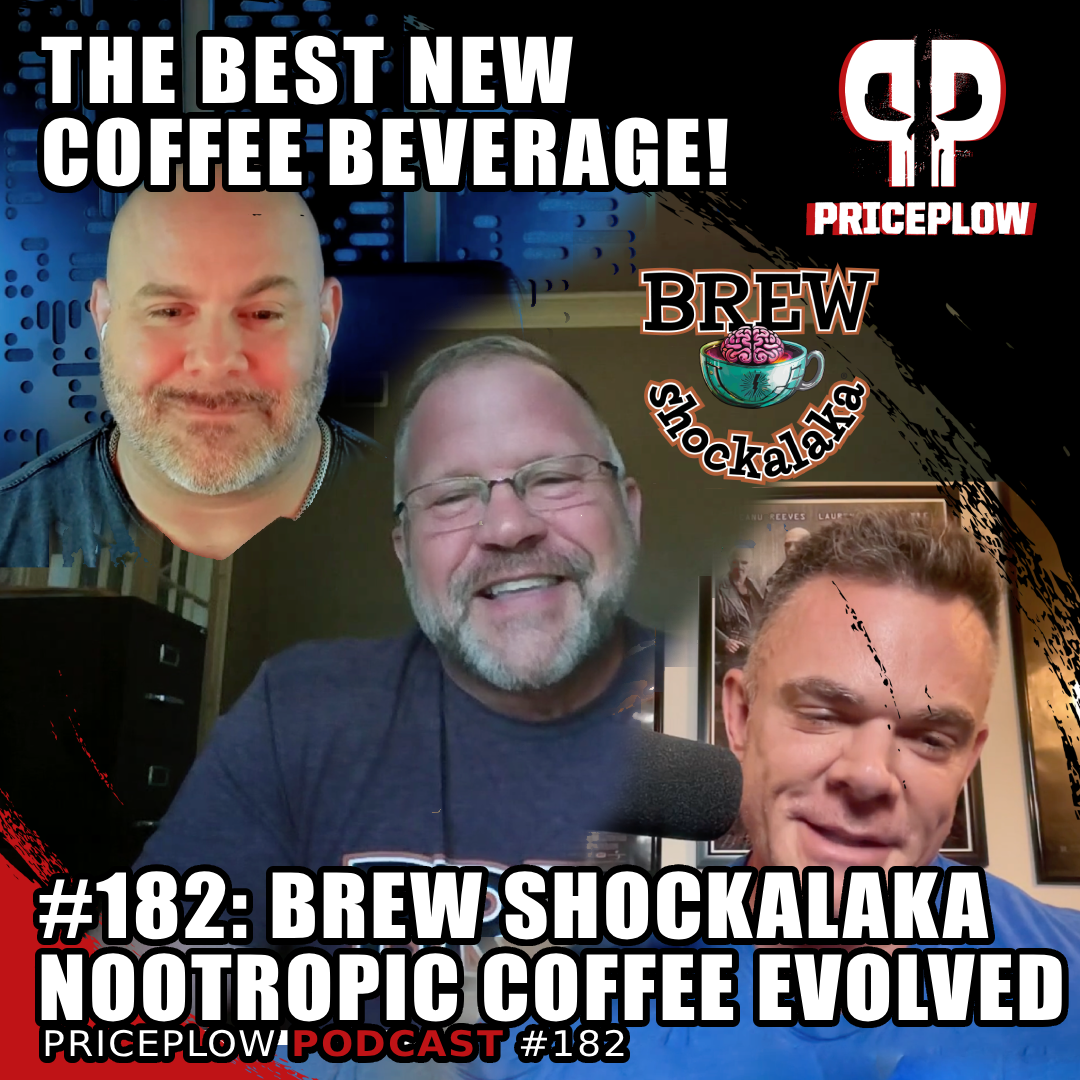
Max Fairchild, Chuck Letchman, and Daniel Pierce reveal how they're revolutionizing the RTD coffee market with Brew Shockalaka's zero-sugar, nootropic-enhanced formula on Episode #182 of the PricePlow Podcast.
The manufacturing innovation matters too. That 24-month shelf life from retort processing means you're getting a product that maintains its taste and functionality month after month, without the harsh preservatives that plague the category. The mouthfeel from the MCT oil and gelatin hydrolysate, the electrolyte balance from 560mg of potassium and strategic sodium dosing, even the prebiotic fiber blend supporting gut health -- these details separate thoughtful formulation from label decoration.
As we covered in our main product launch article, Brew Shockalaka solves real problems in the RTD coffee and energy drink space: delivering legitimate cognitive enhancement, zero-sugar indulgence without compromise, and functional benefits that conventional coffee can't touch.
Max Fairchild, Chuck Letchman, and their team didn't just create another beverage. They engineered a legitimate evolution in functional drinks -- one that makes those $7 sugar-bomb lattes look pretty obsolete by comparison.
Want to hear more about the development story, manufacturing challenges, and strategic vision behind Brew Shockalaka? Check out Episode #182 of the PricePlow Podcast where Max, Chuck, and Dan Pierce share the full story.
Brew Shockalaka Coffee RTD – Deals and Price Drop Alerts
Get Price Alerts
No spam, no scams.
Disclosure: PricePlow relies on pricing from stores with which we have a business relationship. We work hard to keep pricing current, but you may find a better offer.
Posts are sponsored in part by the retailers and/or brands listed on this page.
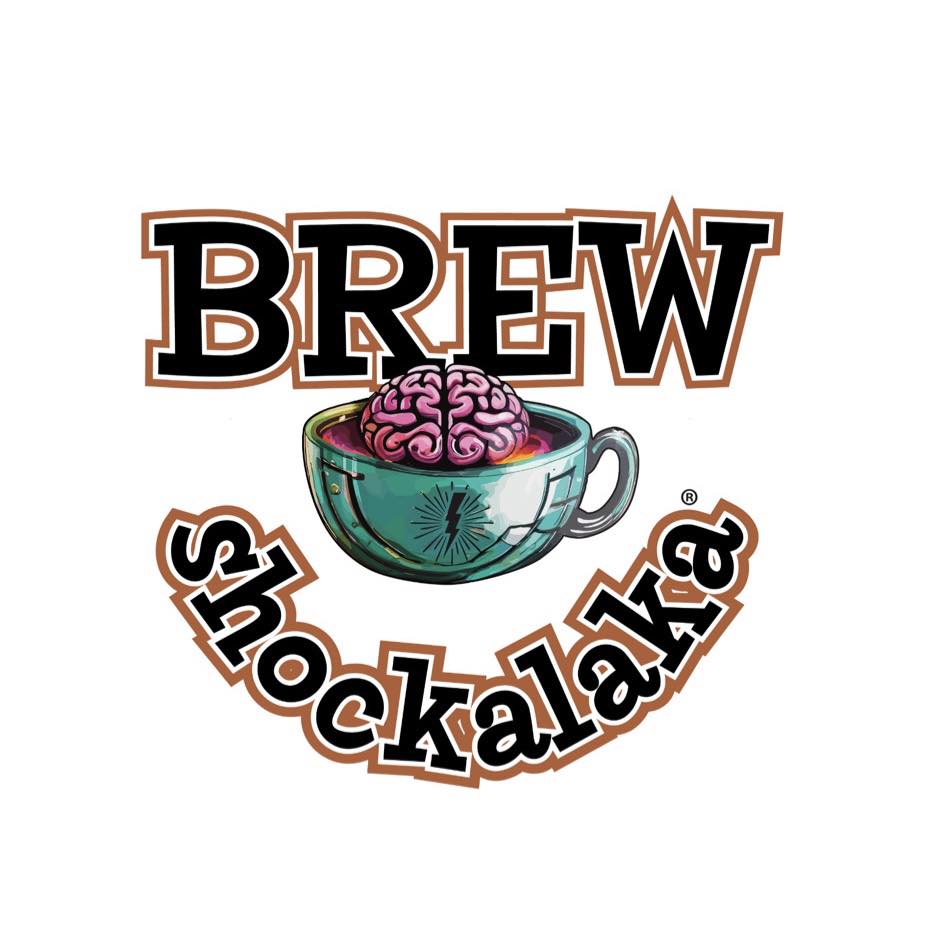
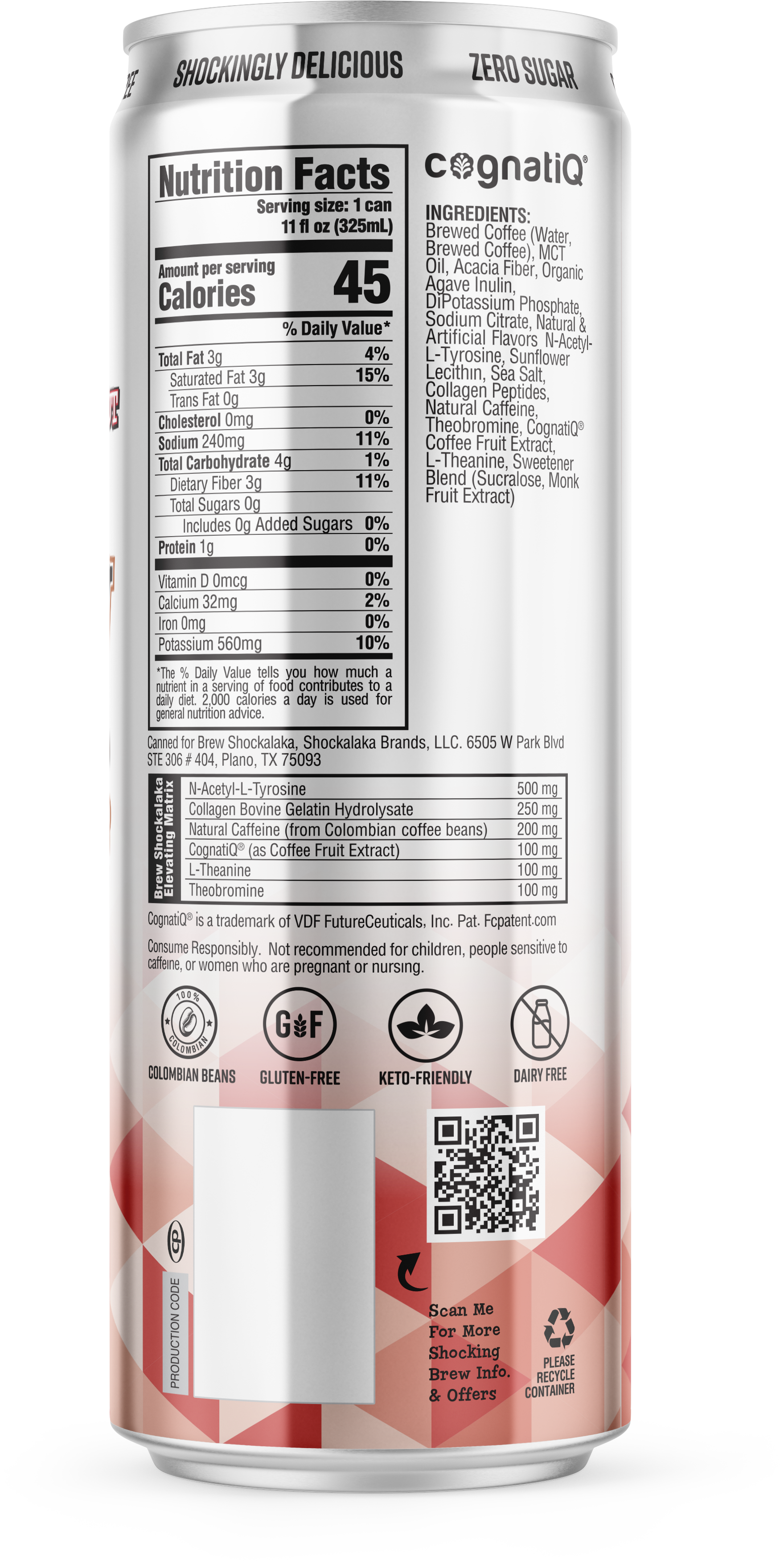
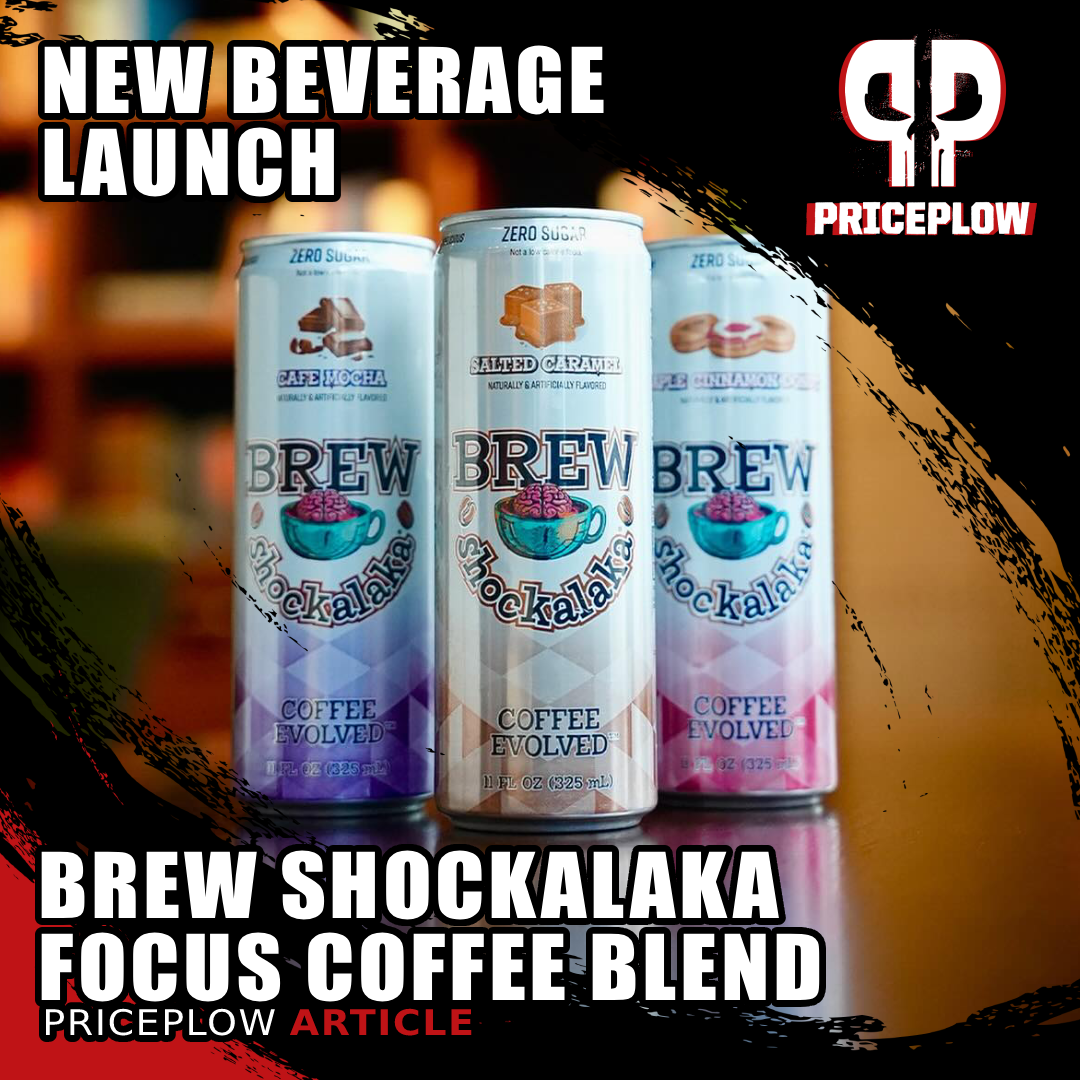
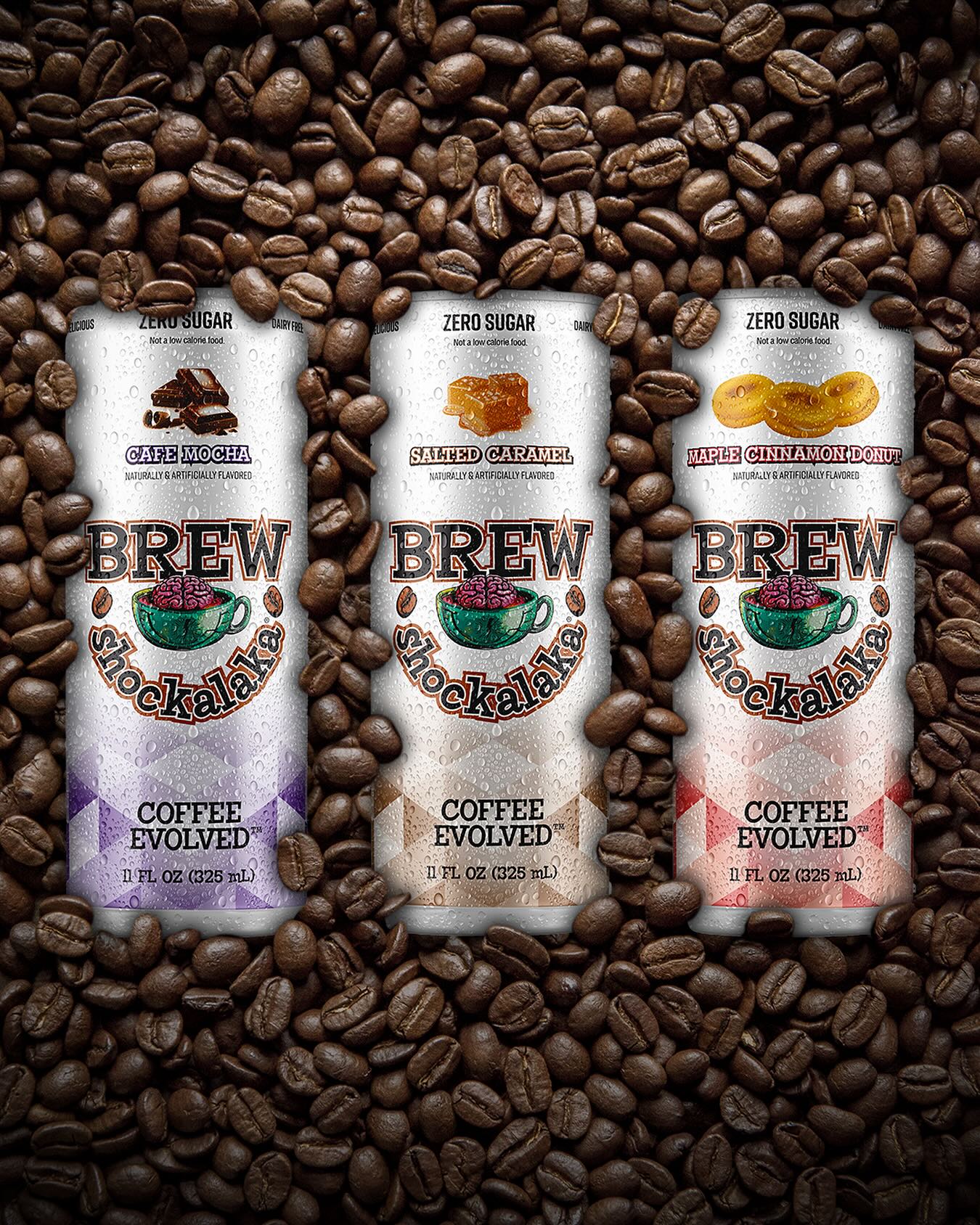
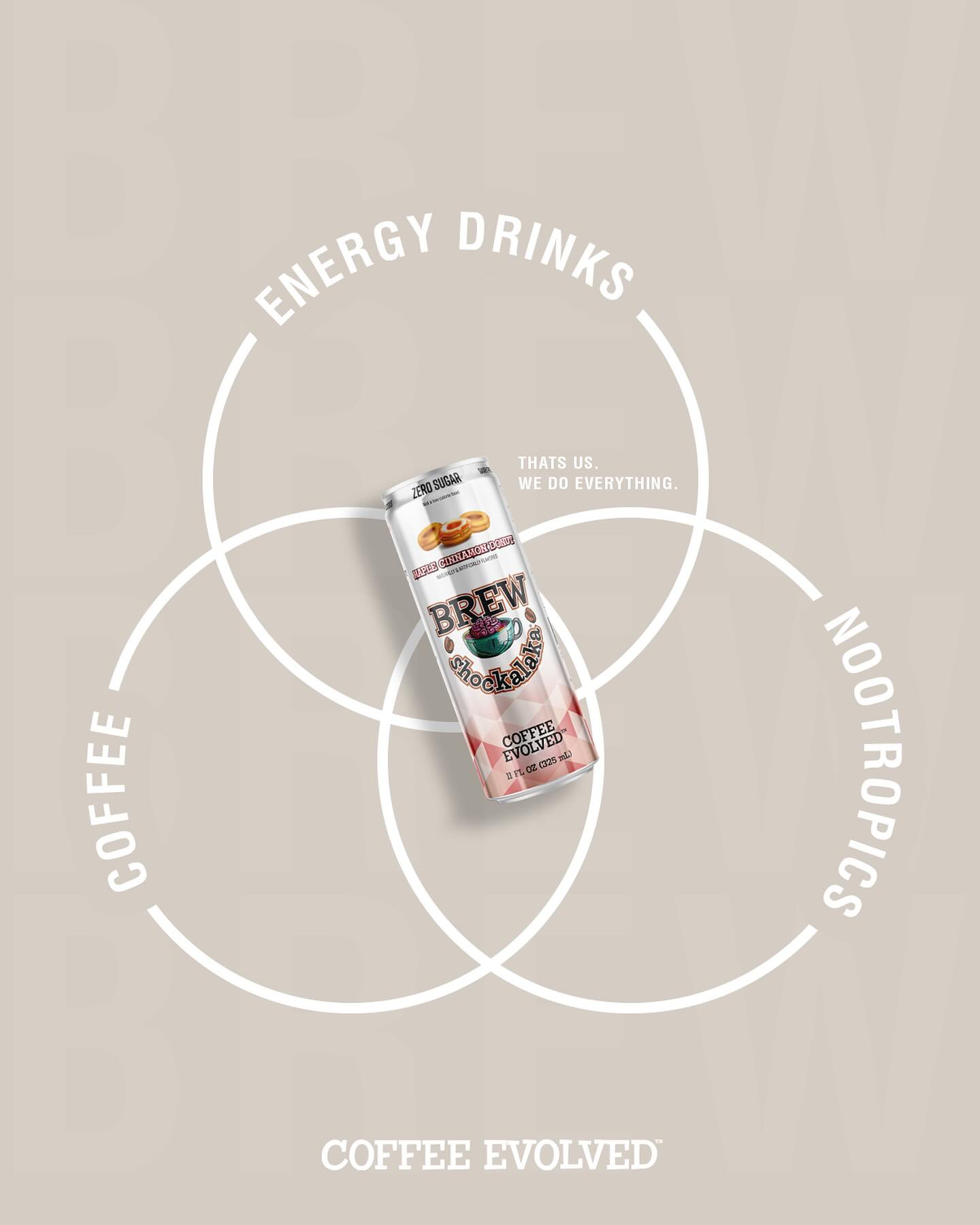
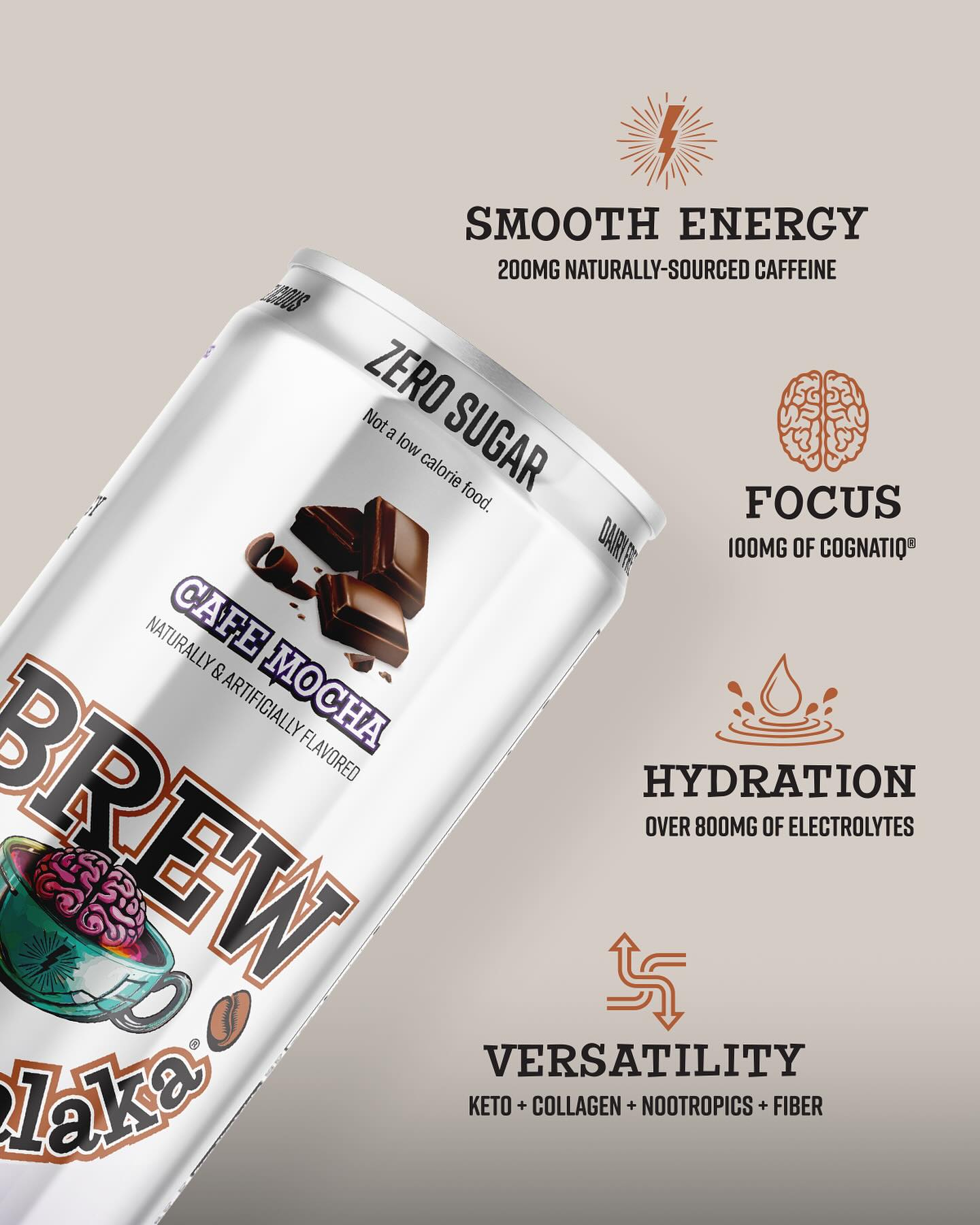
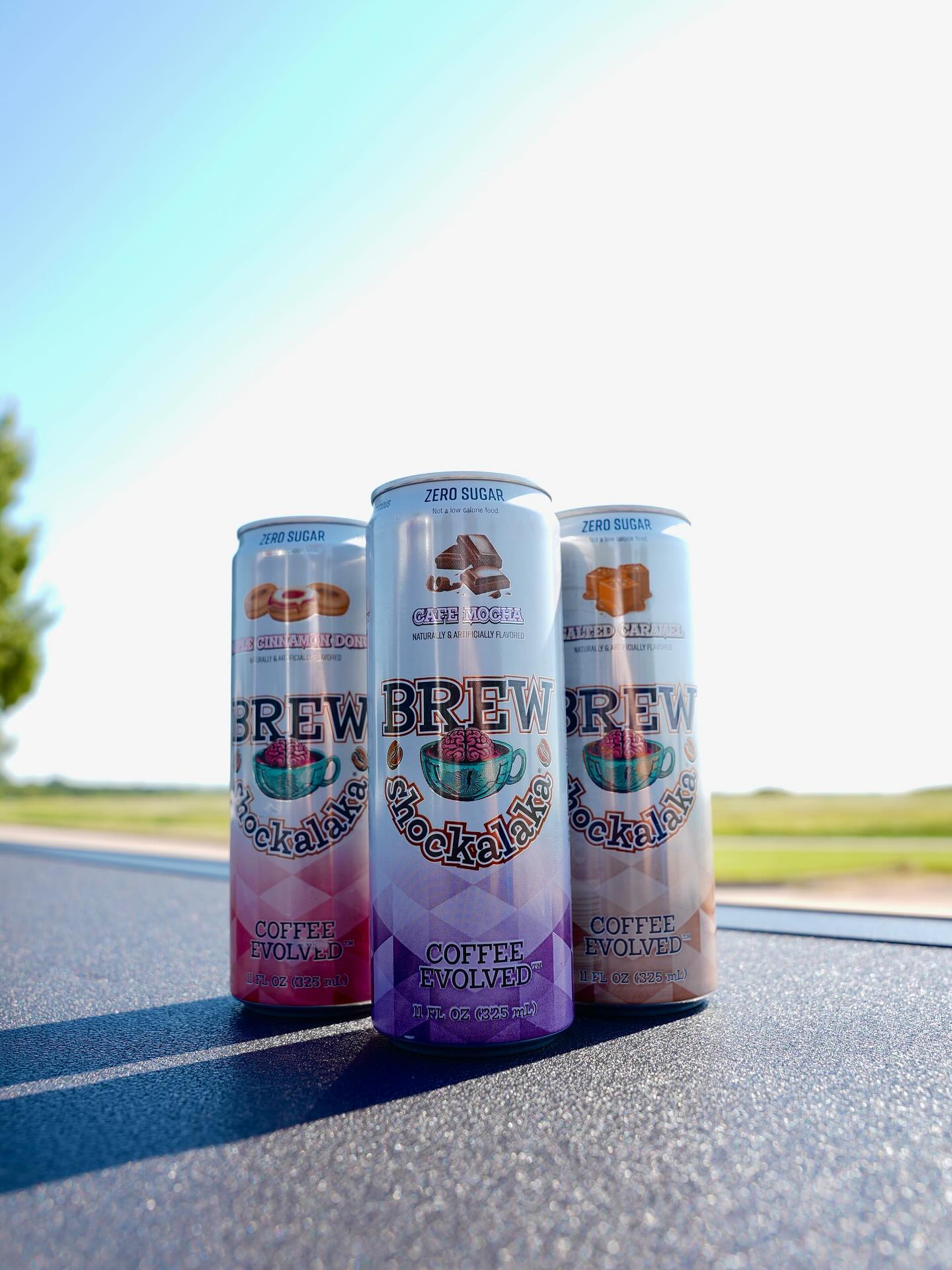
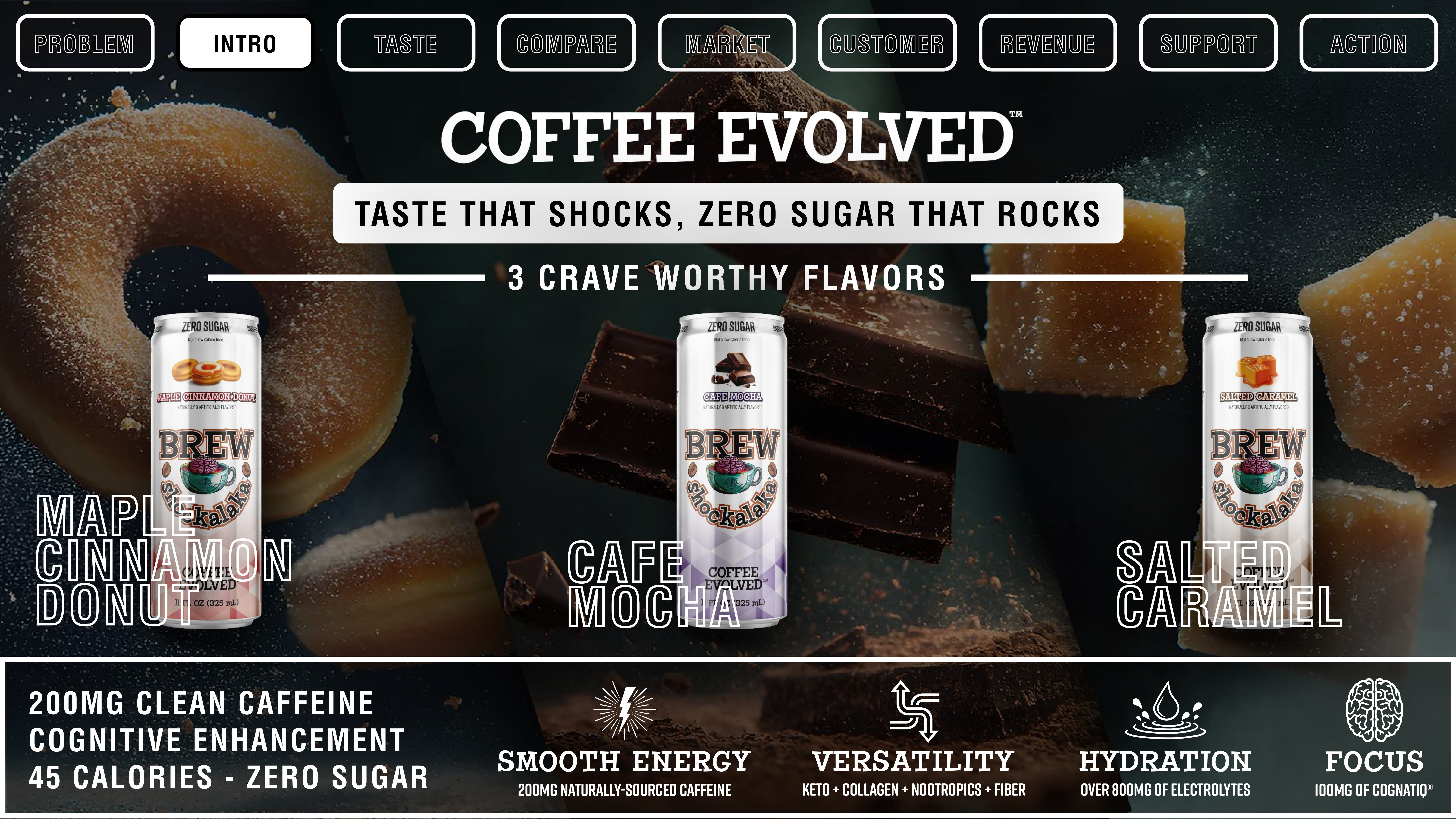
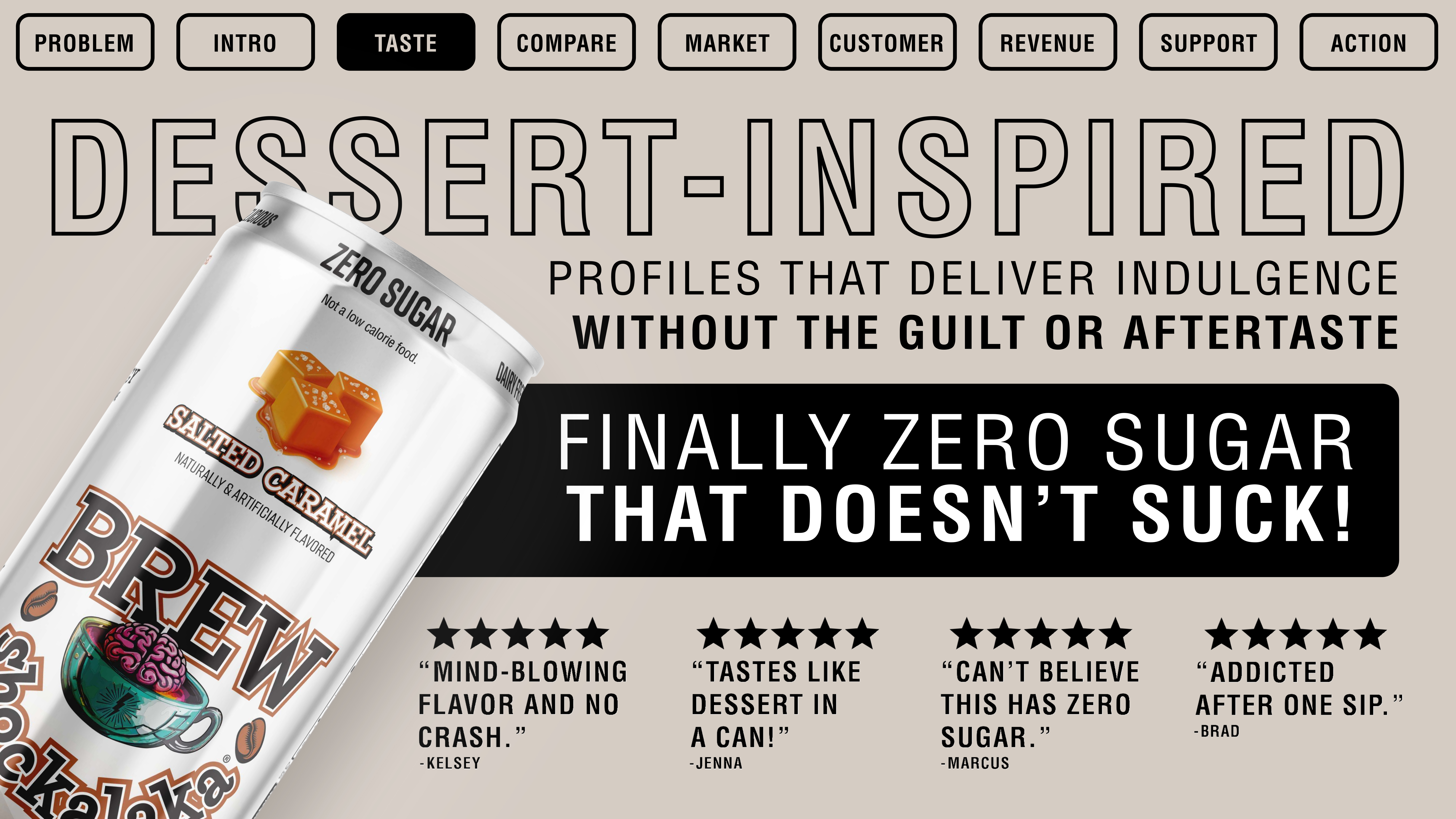
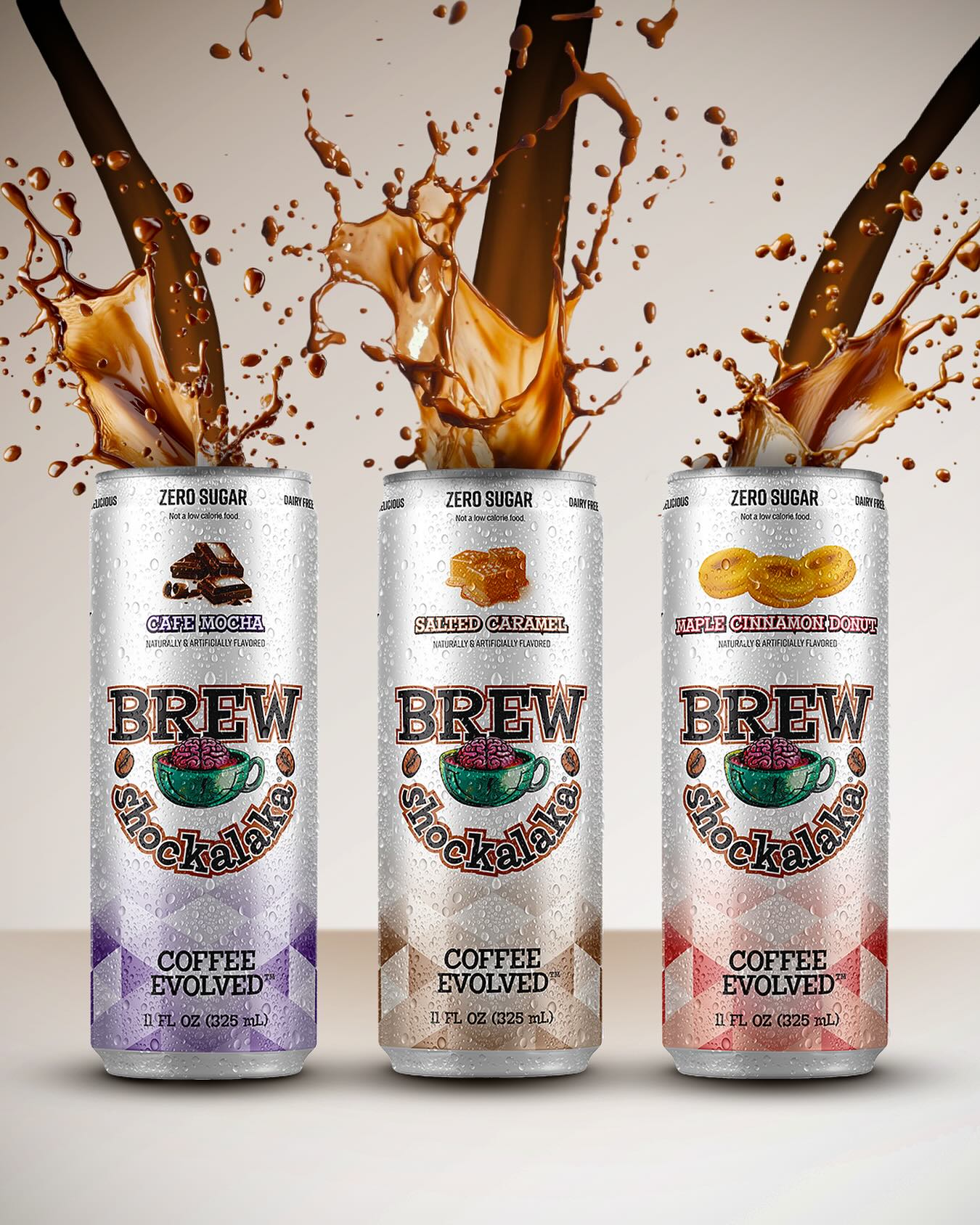
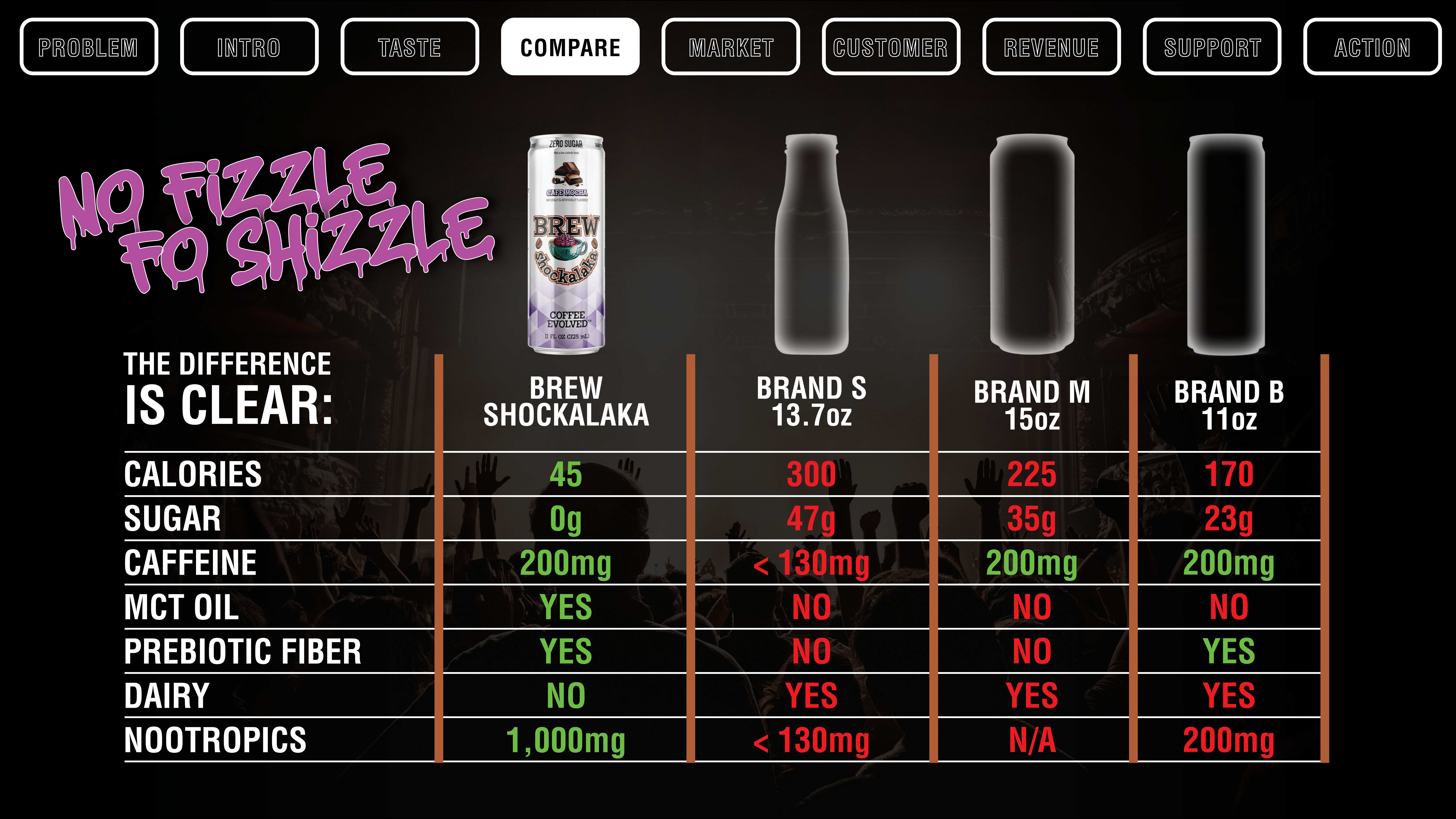
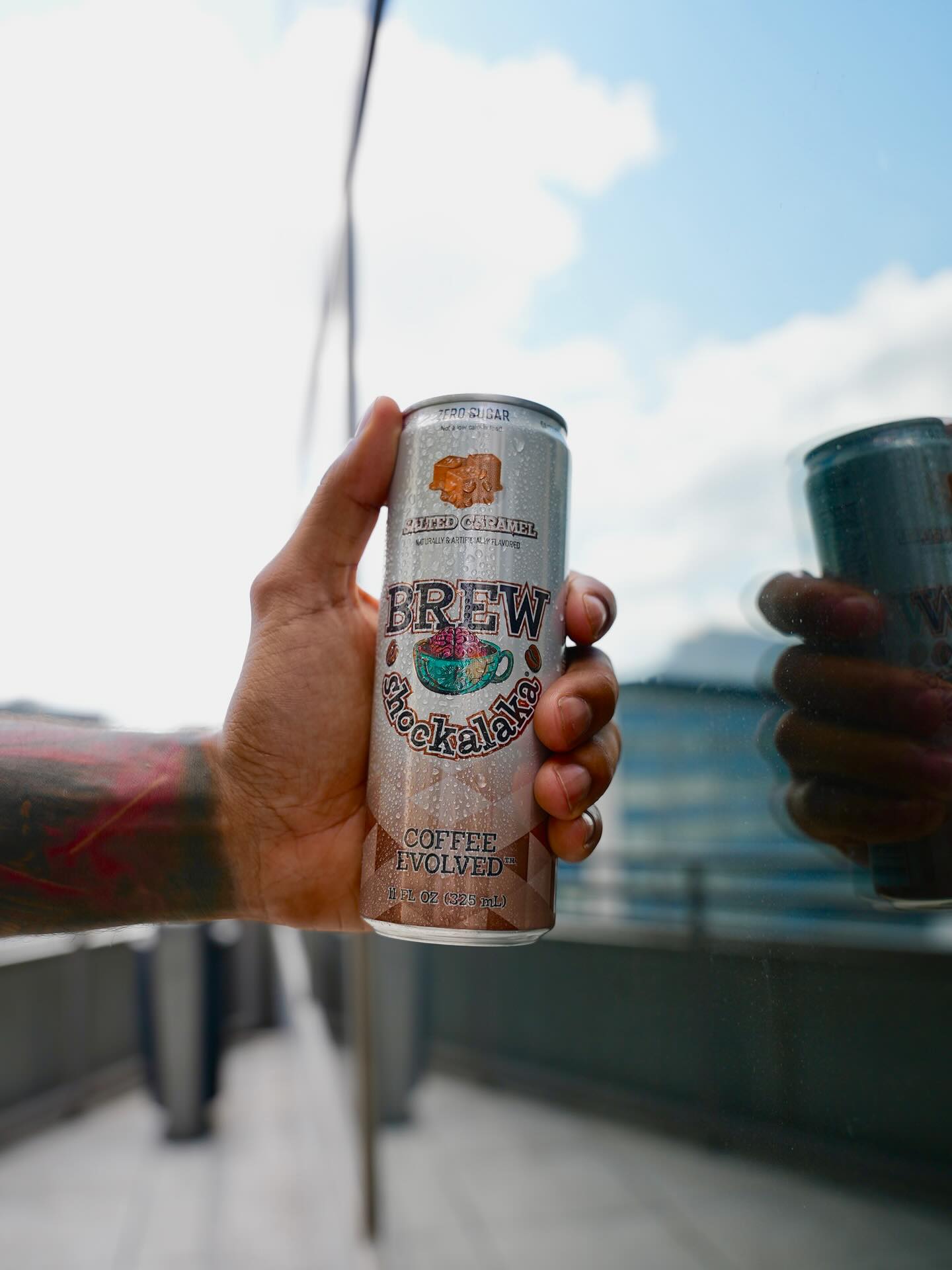
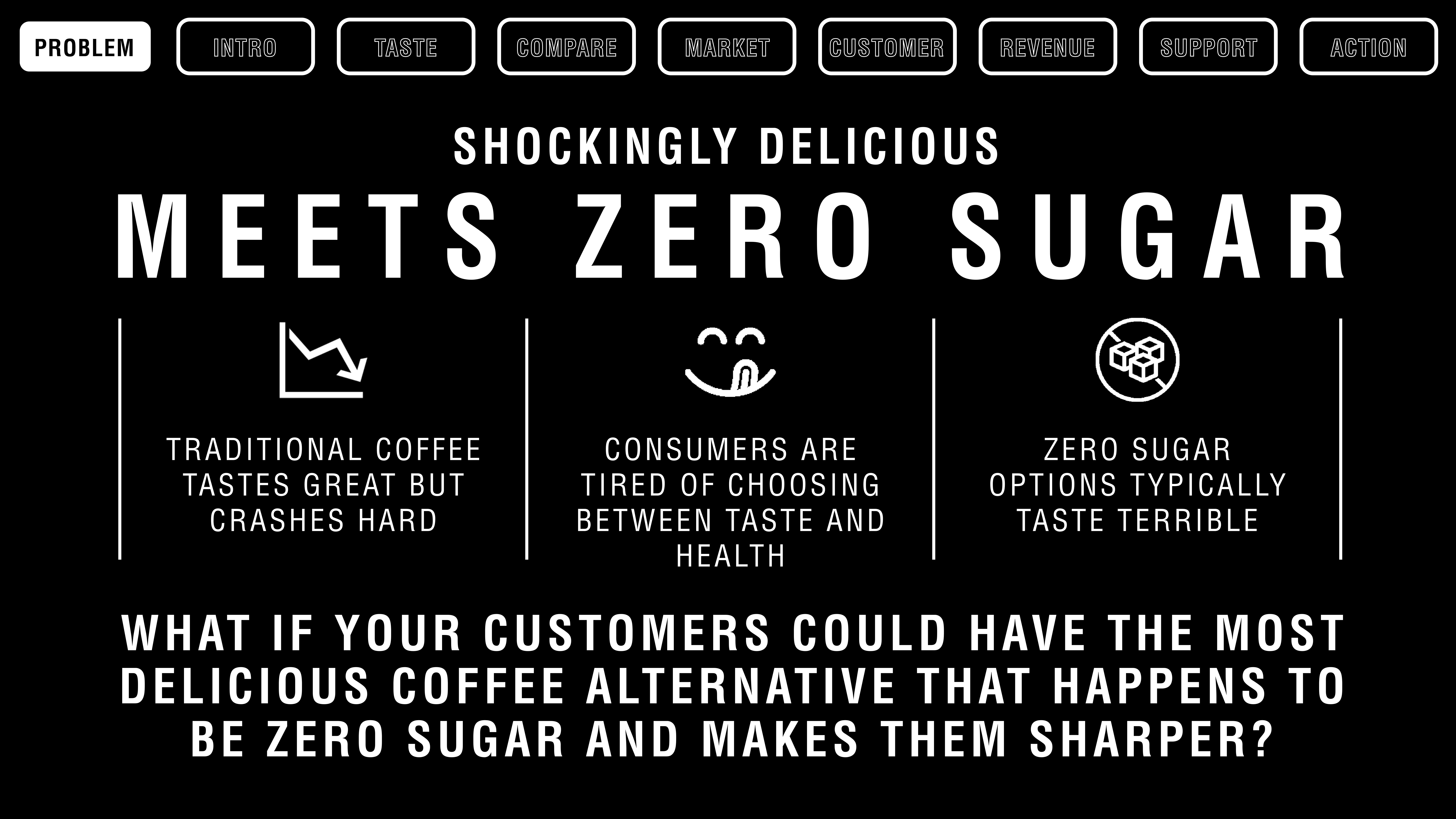
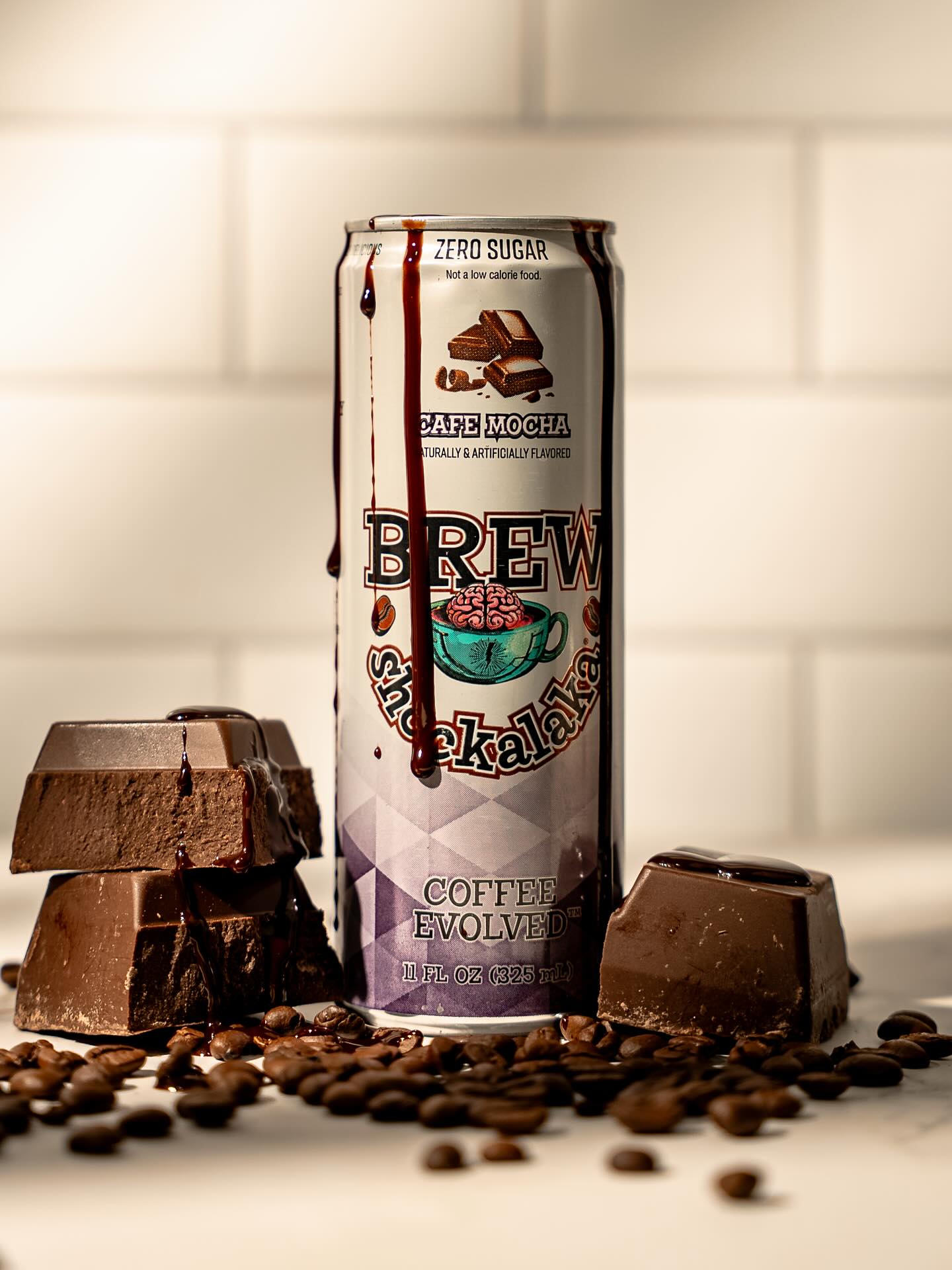
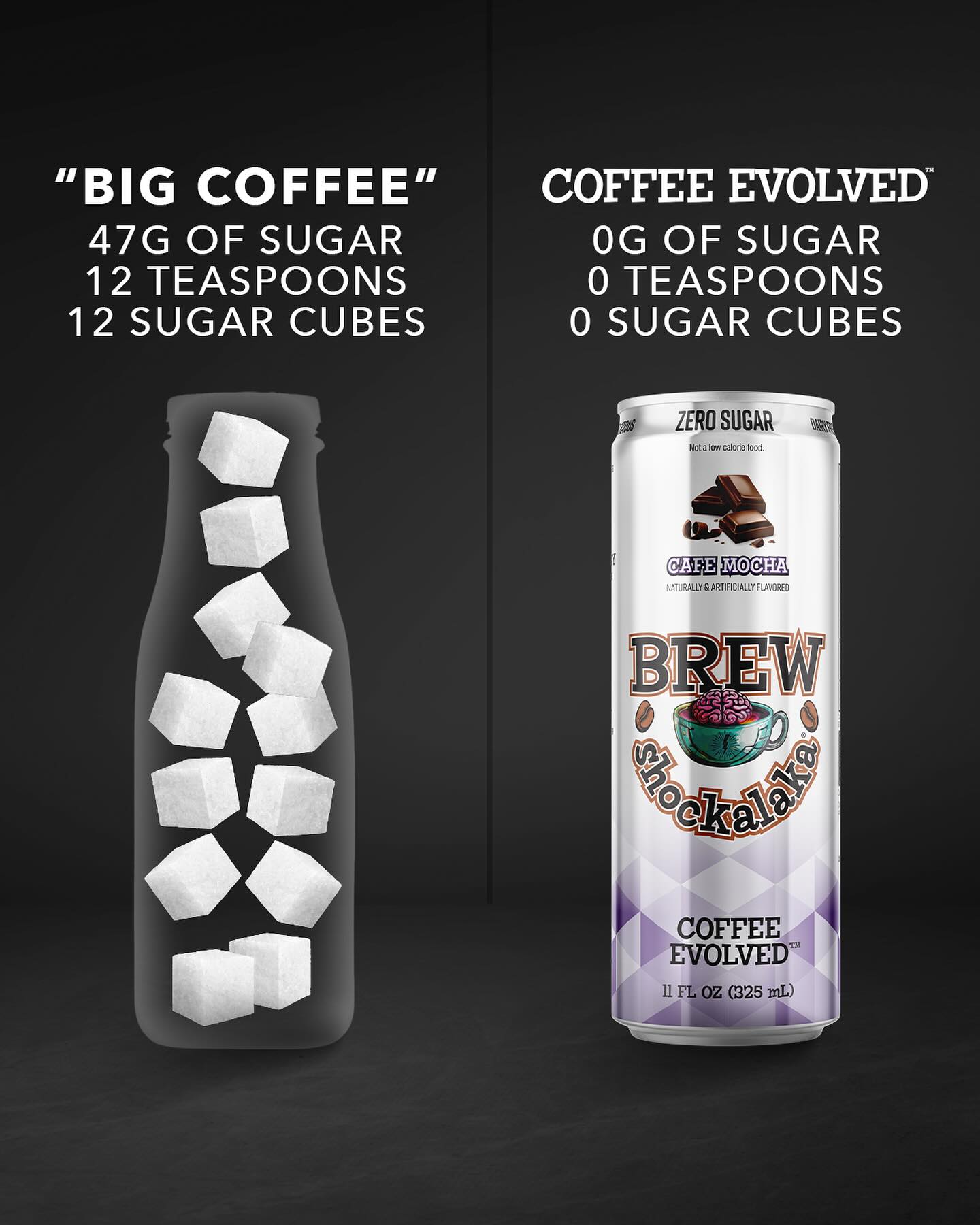
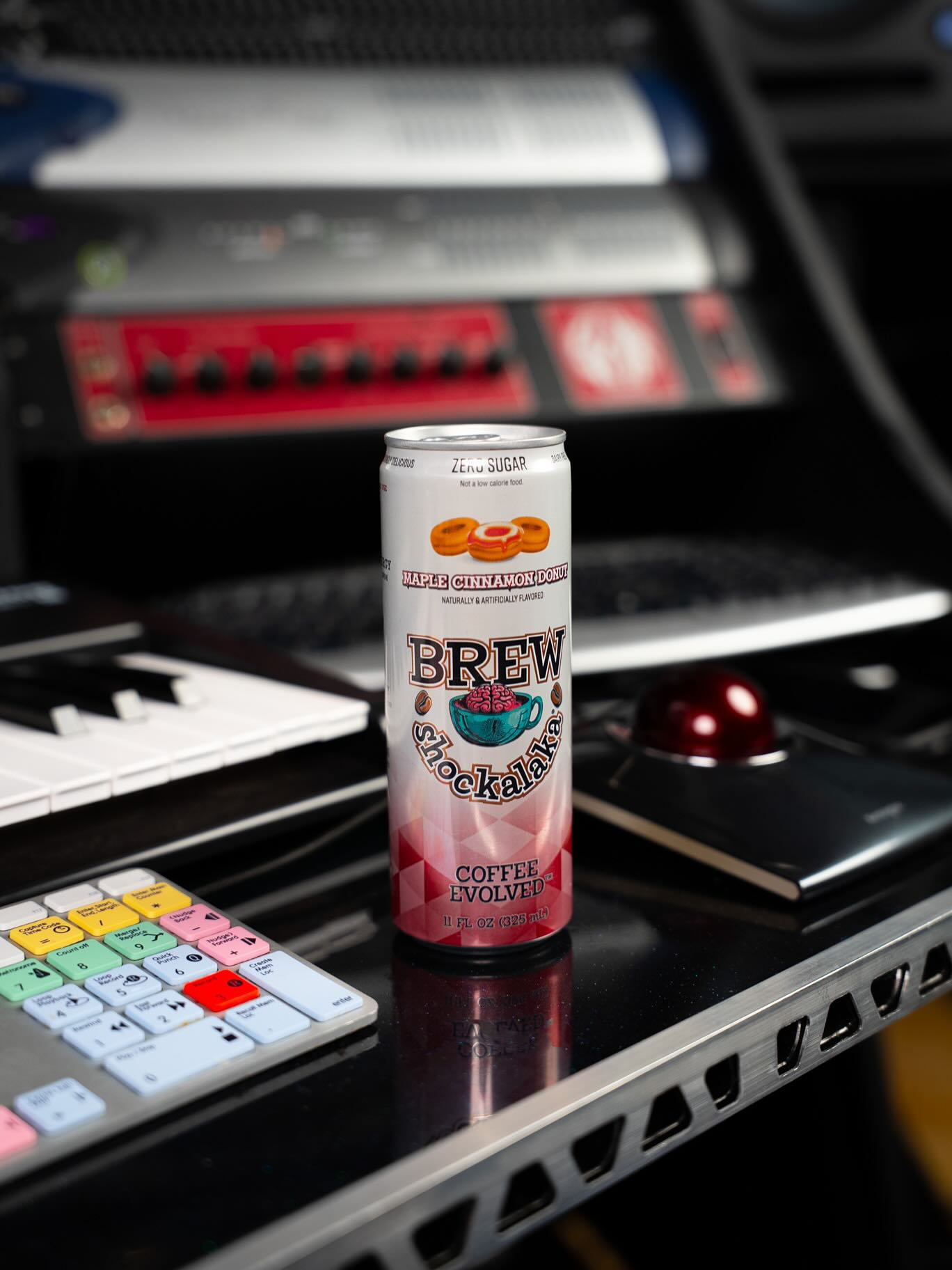
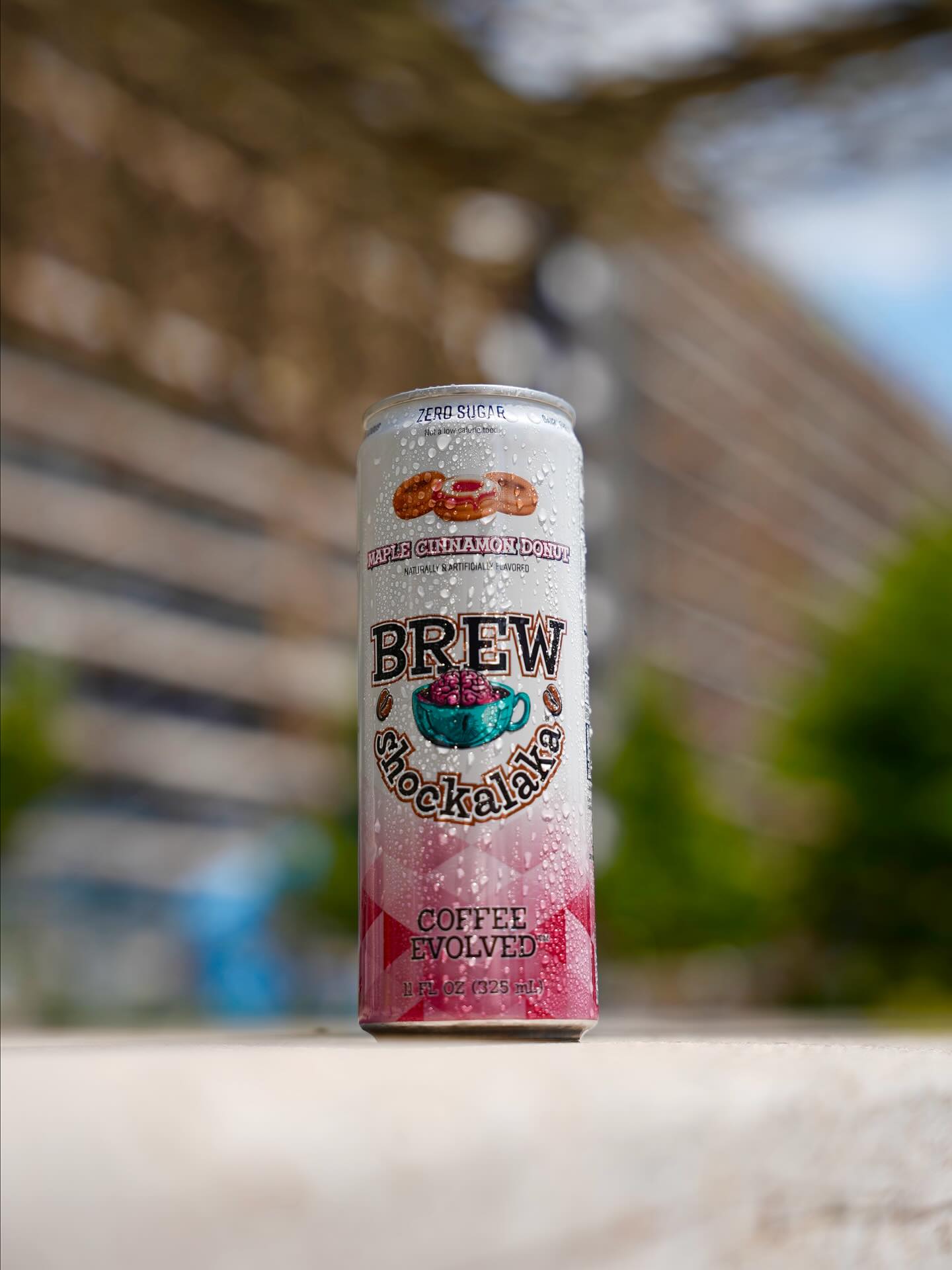

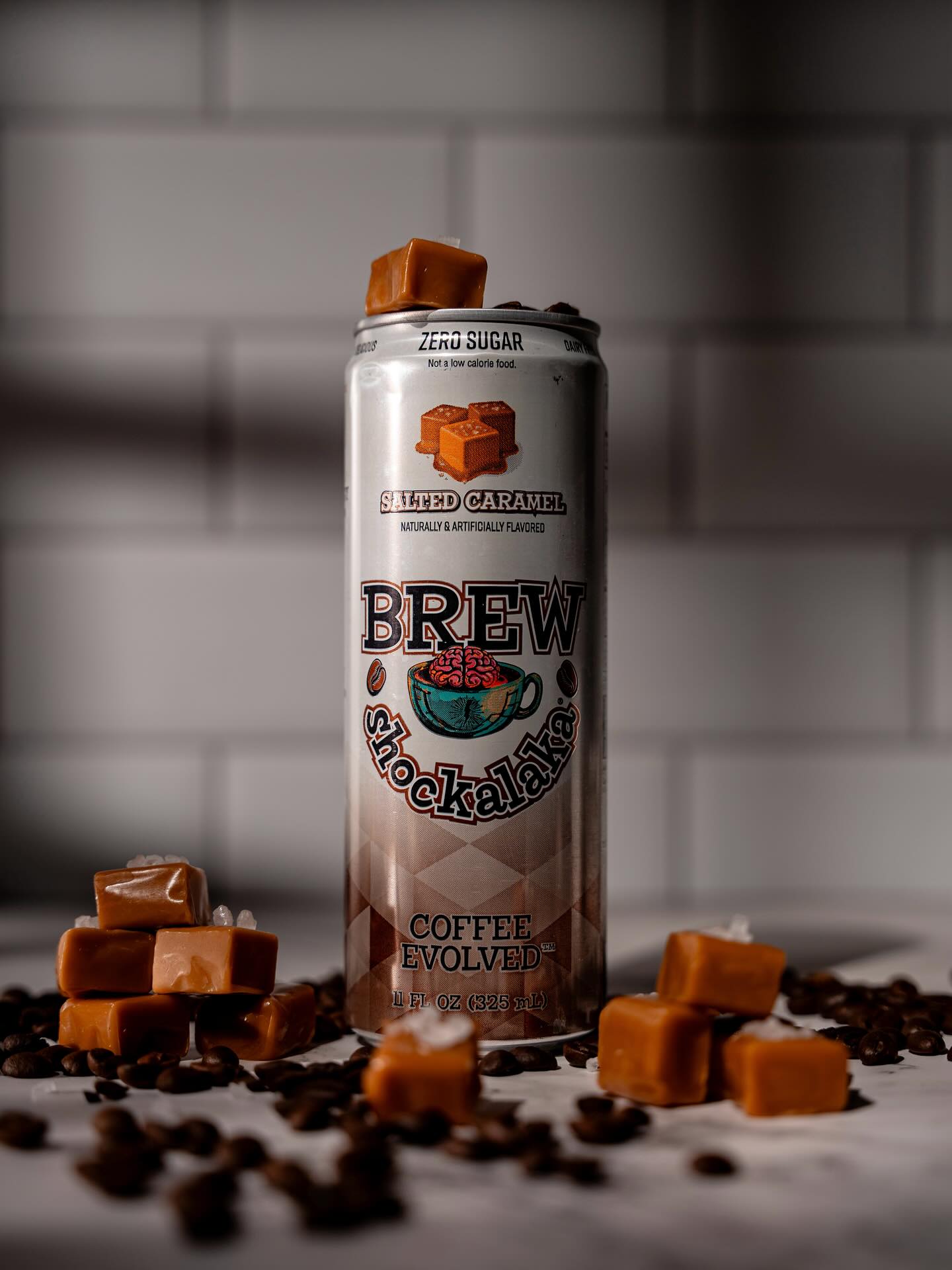
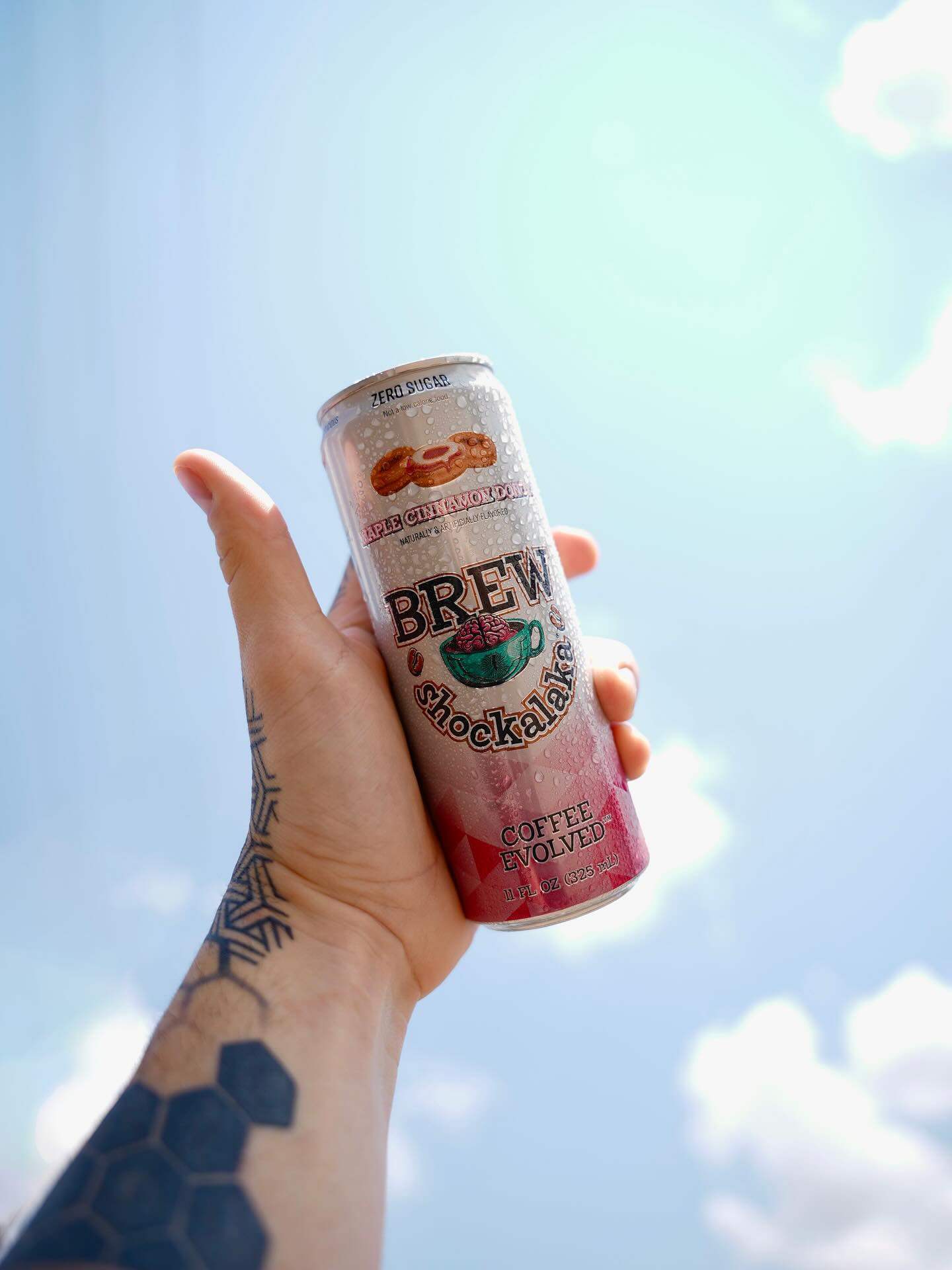
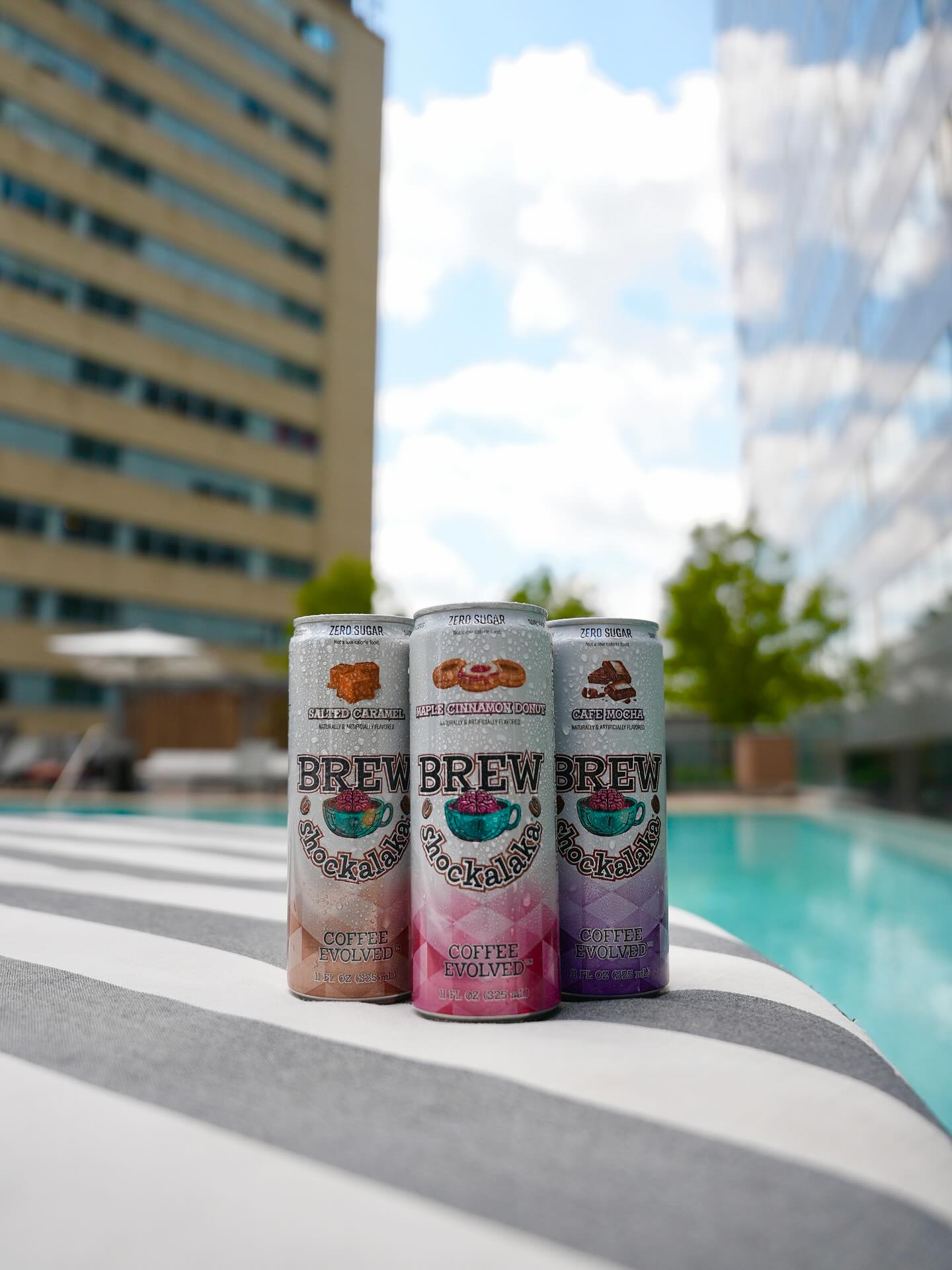
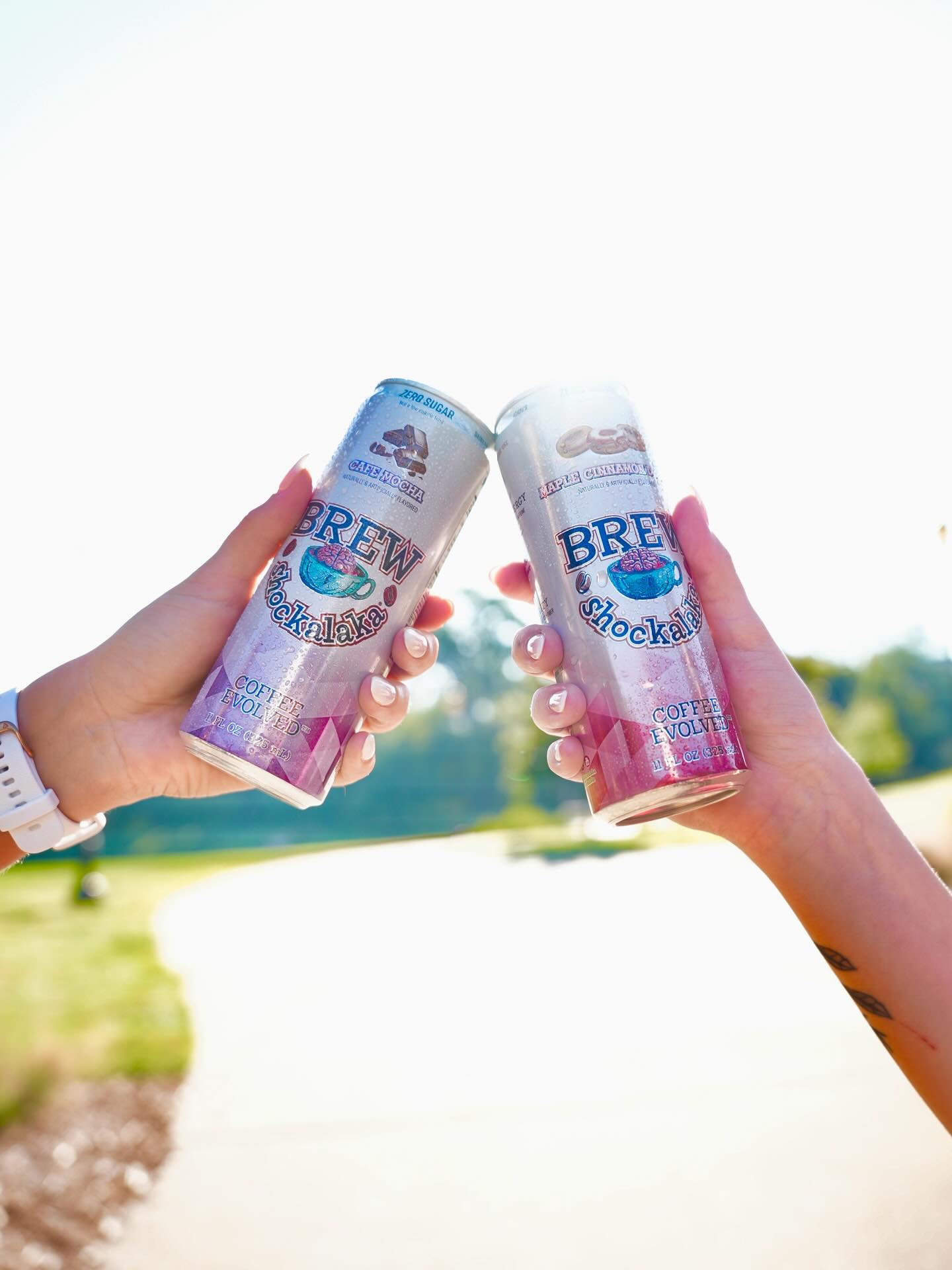
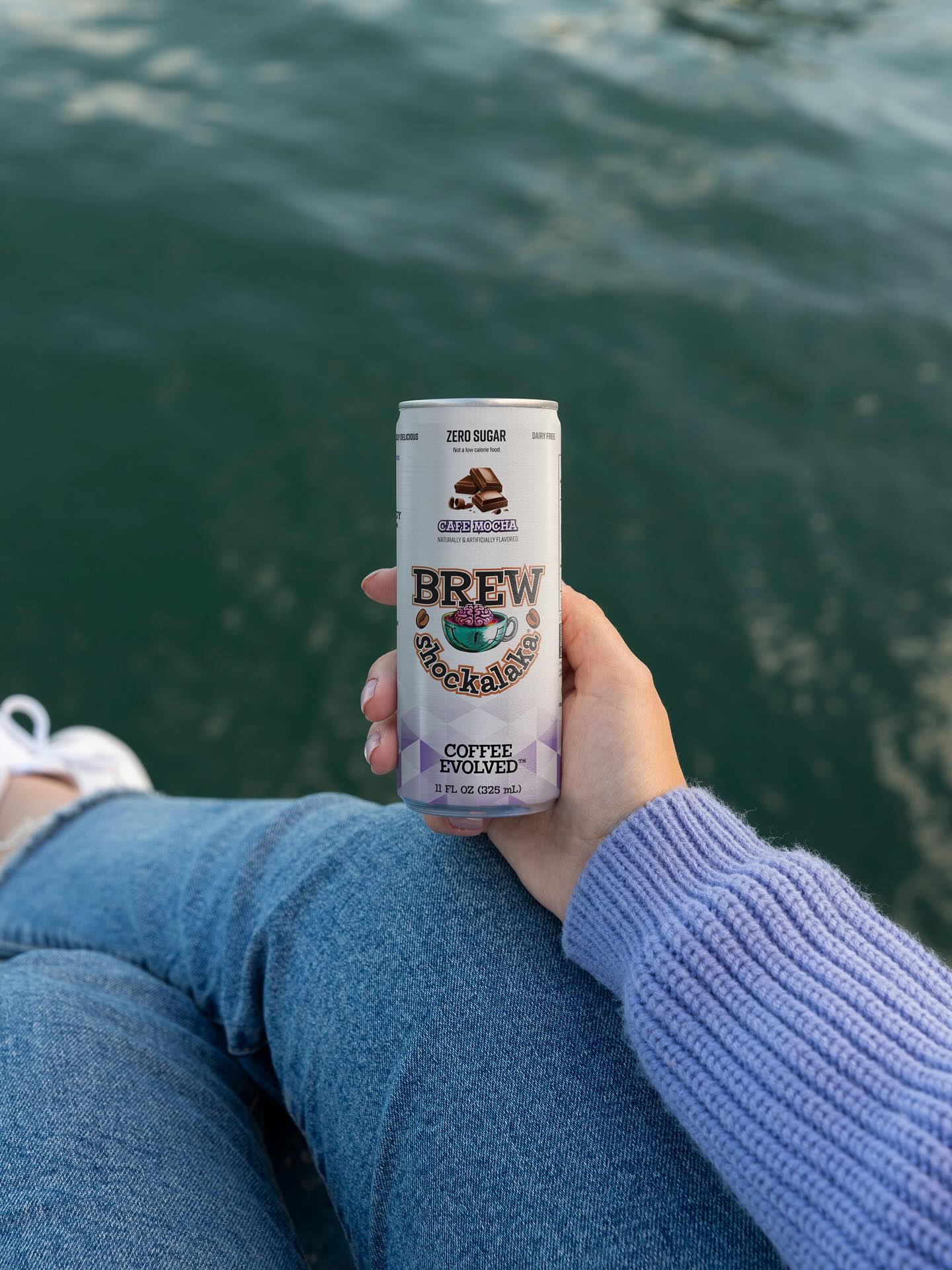
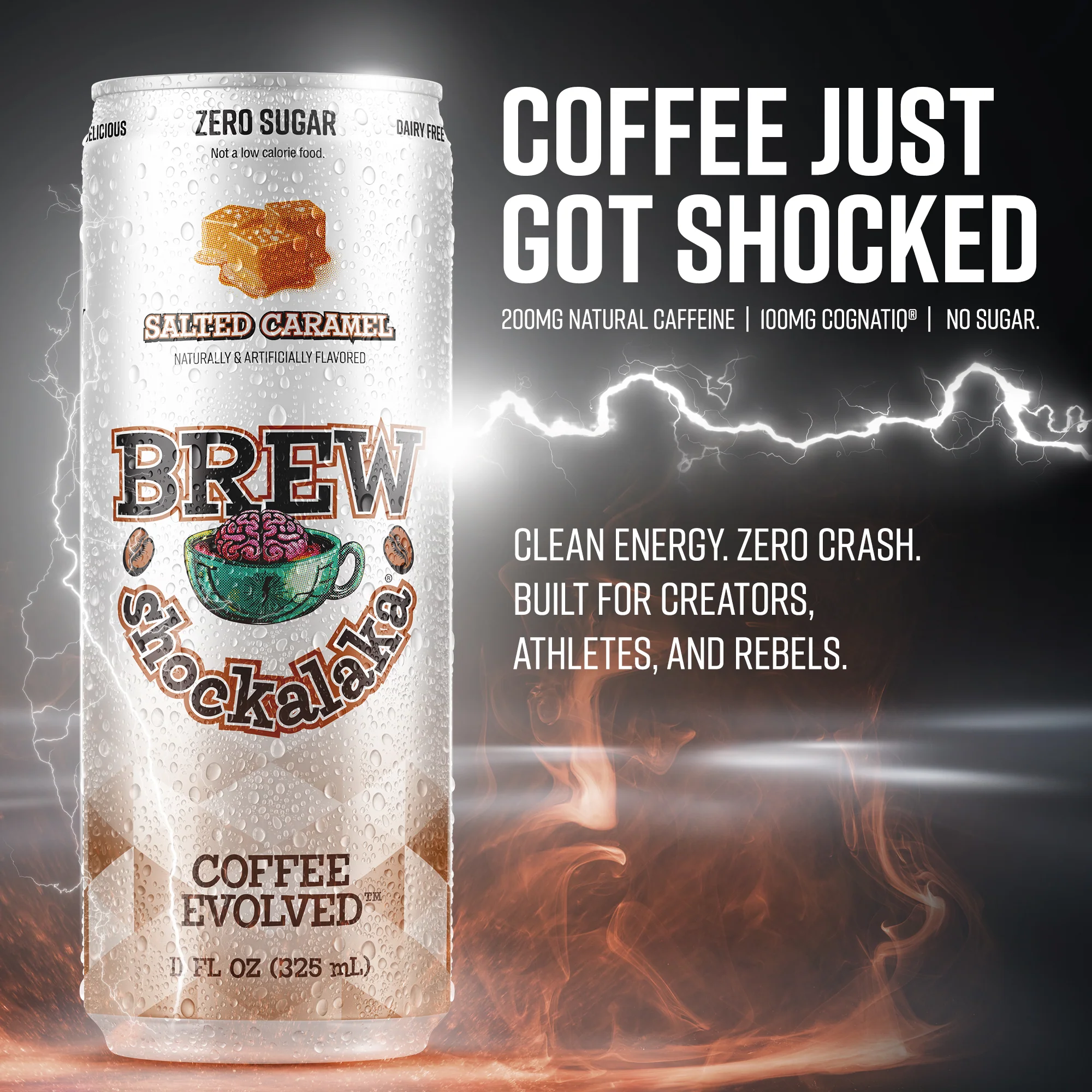
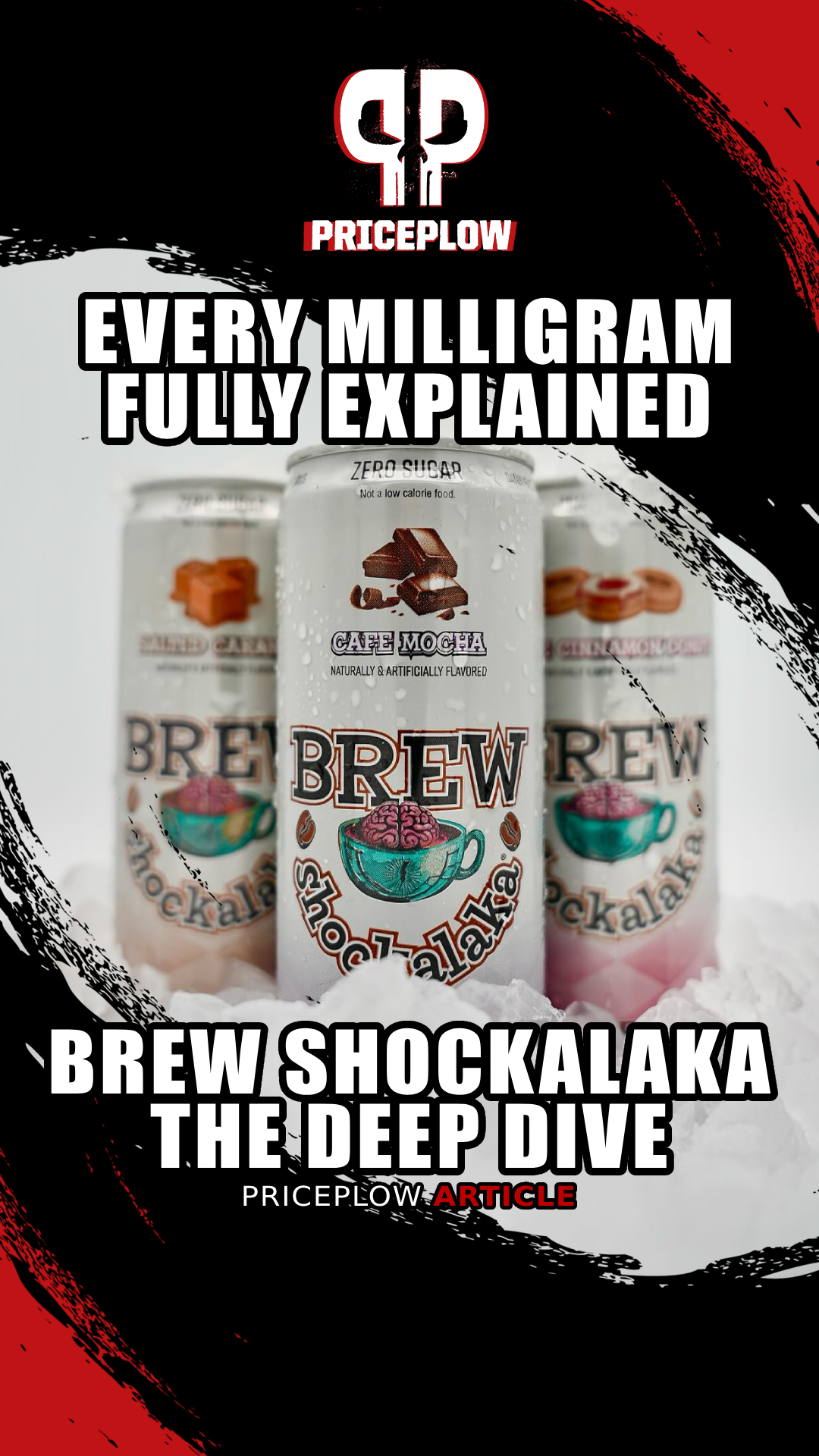

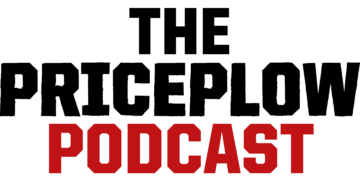
Comments and Discussion (Powered by the PricePlow Forum)